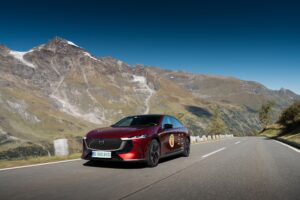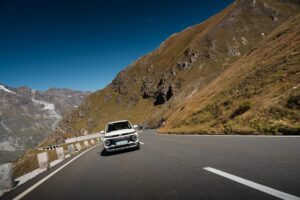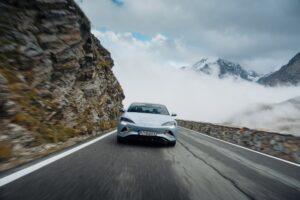The big day is here. We start our journey through the Alps with the jewel of the Austrian crown, its most popular road: Grossglockner Hochalpenstrasse.
The Grossglockner is one of Austria’s main tourist attractions. Over 300,000 vehicles of all kinds and shapes pass through its hairpins every year. In 2022 alone, 181,000 cars and 92,000 motorcycles found their way here.
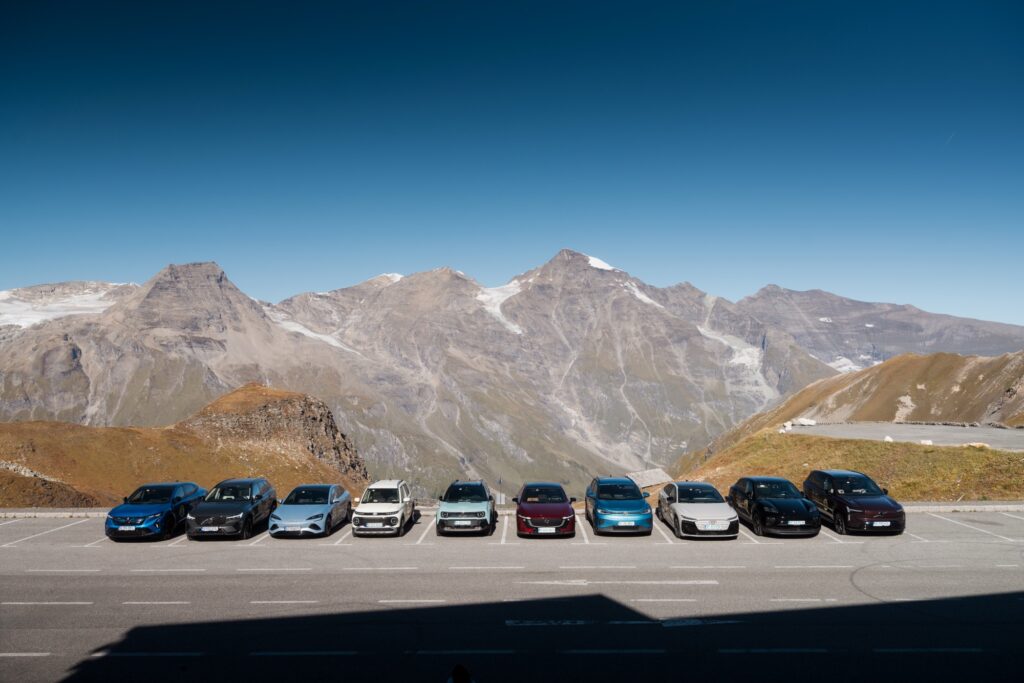
People vistit the Grossglockner because they either want to enjoy the scenery or take their cars or motorcycles for a spin. And by the way, you can go up the mountain in your tractor, should you own one.
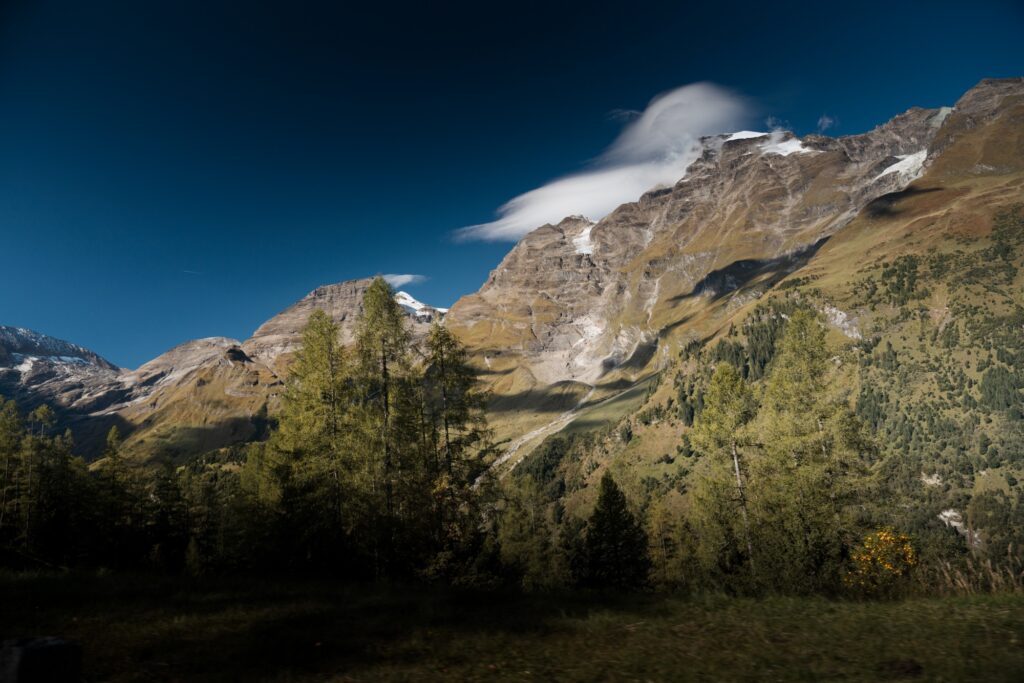
A Road Is Born
Plans to build the Grossglockner were made official in 1922. The whole idea was wrapped around promoting tourism in the area, based on the natural beauty of its landscape: a high alpine road that would connect Sazlburg and Venice.
The idea has been strongly supported by Salzburg MP Rudolf Ramek, a passionate advocate for the development of tourism. He then further develops the vision of a “grand Alpine road”. Ramek emphasizes the economic opportunities for Salzburg, Carinthia and East Tyrol and also proposes modern hotels and winter sports centres.
Another important moment takes place in June 1924. The state of Carinthia invites representatives from Salzburg to discuss possible road projects. The choice is to be made between Felbertauernstraße and Glocknerstraße. The latter wins, thanks to its spectacular alpine scenery.
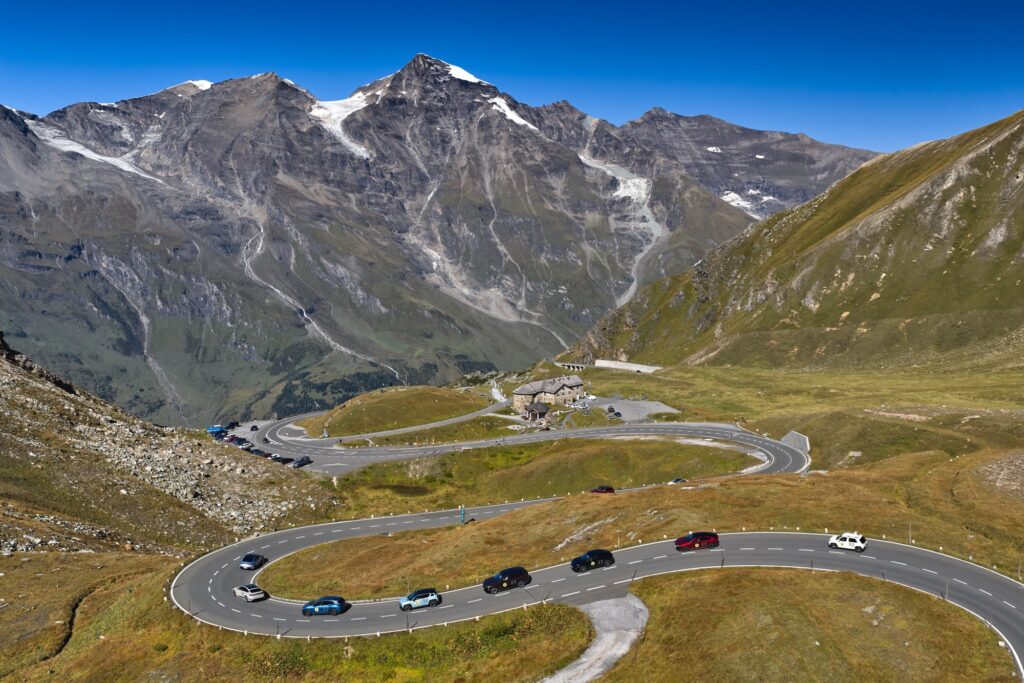
The reasons behind building the road are clear. Driving a car was a luxury at the time. This prestigious project was to attract wealthy visitors and boost tourism. In addition to economic interests, national identity and Austria’s desire to promote itself as a technically modern country also played a role. After the First World War, Austria was also looking for ways to assert itself as an independent nation, and the loss of South Tyrol meant a new Alpine crossing was necessary.
As a result of the Carinthian Conference in June 1924, a construction committee was set up and the same month, engineer Franz Wallack (1887-1966) was tasked with planning of the Grossglockner Alpine Road. Wallack’s name would later remain closely linked with the project.

Wallack immediately set off with two field assistants. “First by eye and then with measuring instruments,” Wallack describes his planning method. They slept in tents or alpine huts and explored the region on foot. Wallack’s goal was not only to find a suitable route, but also to integrate the road into the landscape so that it sat in harmony with nature. The engineer had a clear vision: spectacular viewpoints, as little interference with nature as possible and a safe road that would cross the high alpine region.
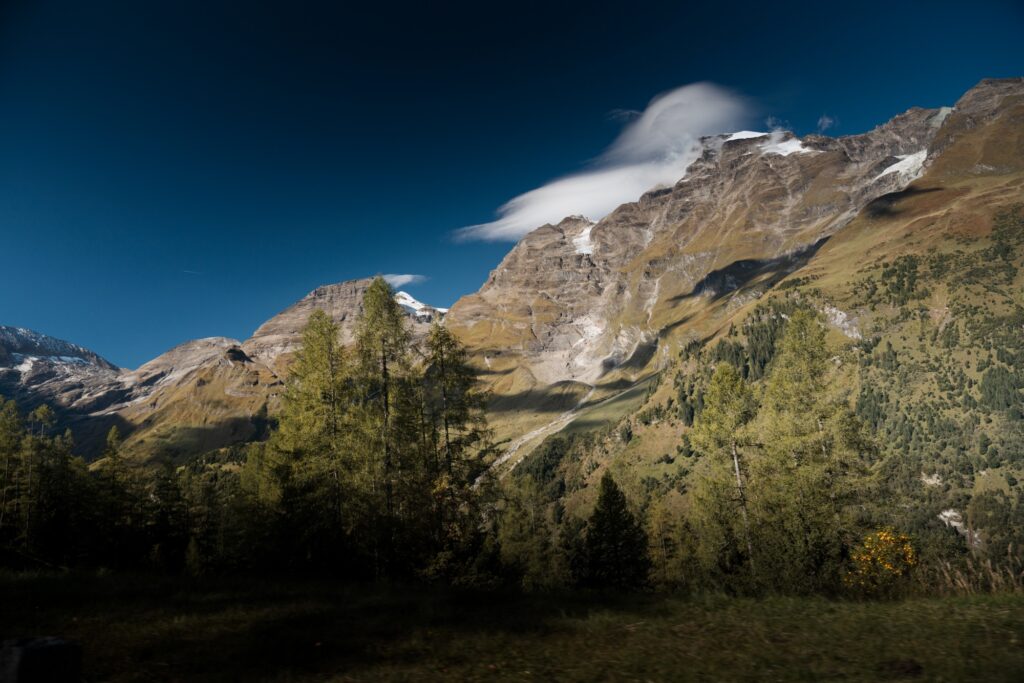
Besides choosing the optimal route, he also analyzes geological conditions. He studies the rock types, checks the stability of the slopes and looks for the ideal places for hairpins and bridges. The risks of avalanches, rockfalls and landslides are taken into account from the outset to keep winter closures as short as possible.
In September 1924, Wallack presents his first project entitled “General Project of the Grossglockner Alpine Road”. The route crosses Hochtor, a decision that would later be implemented with minor adjustments. Impressively, in just three months, Wallack draws up a solid plan together with a cost estimate. Depending on the width of the road, he calculates it would cost between 22 and 30 billion Austrian crowns.

In 1925, the engineer went on a study trip of several weeks, during which he inspected a total of 43 alpine roads. He measures curve radii and analyzes traffic flow. In addition, he studies toll rates, as he sees the Grossglockner road not only as a technical transportation project but also as a great tourist attraction.
His conclusions are integrated into further planning. He finds that a wider road with a more solid foundation is the best long-term solution. Thus, the originally planned 3-meter-wide gravel road with refuge areas and a maximum gradient of 11 percent is transformed into a 6-meter-wide road with two lanes. The load-bearing capacity increases from 8 to 24 tons, a decisive step for the future tourist boom. In addition, Wallack complements the project with a concept of hotels located along the road.
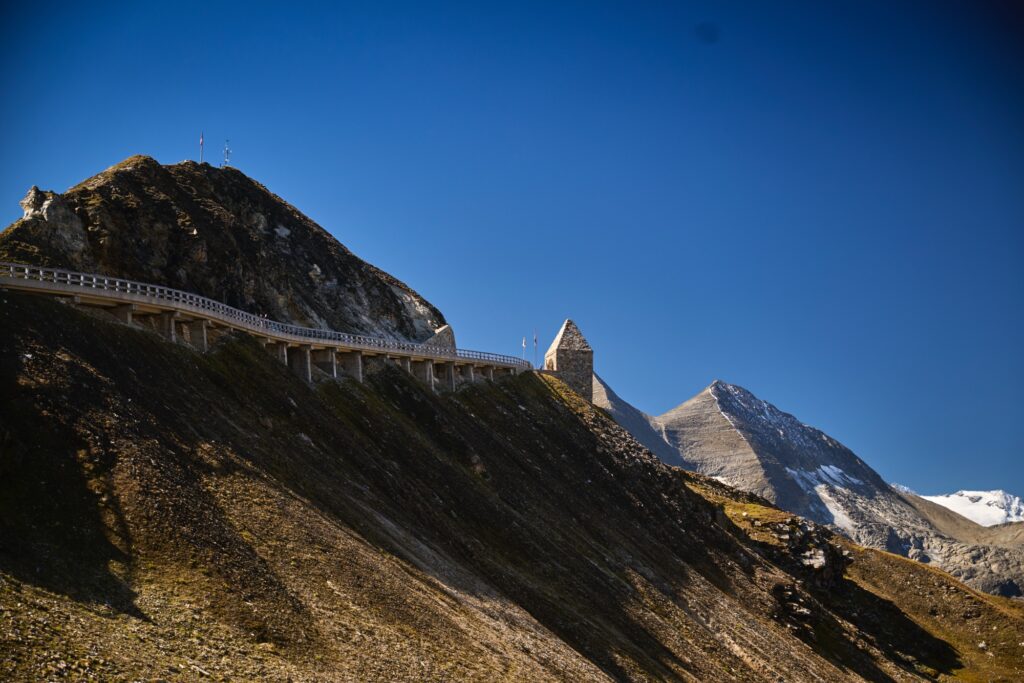
The Grossglockner was a project meant to create thousands of jobs in the region at a difficult economic time for Austria. Unemployment was high in the interwar period, especially after the stock market crash of 1929, and the alpine road project could have created jobs for 4,000 people.
Construction work started at the behest of Franz Rehrl, Governor of Salzburg, on August 30, 1930. An automobile enthusiast, Governor Rehrl was also the first man to cross the road in its infancy in 1934 at the wheel of a modified Steyer 100. It took him seven hours to travel it both ways.
While 800 laborers worked on the construction in the first season, the number rose to 2400 a year later. In 1930, a snowstorm claimed the first fatality and by the end of construction, 12 deaths had been recorded.
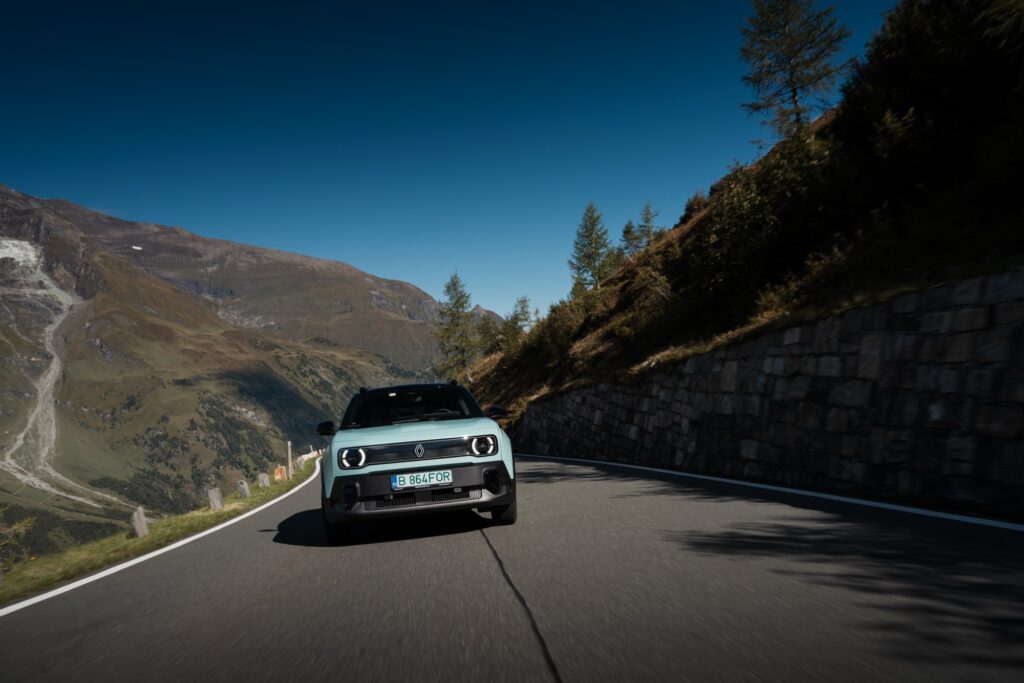
The effort was huge. Construction tools were in limited supply and delivering materials at such a high altitude is difficult. Supplies come by pack animals, tractors and porters. Workers dug with shovels, broke rock with pickaxes and transport it by wheelbarrow. Pneumatic pick-hammers and explosives are used where the rock is too hard.
Overcoming all obstacles, including lack of funding and political turmoil, just five years later, in 1935, the Grossglockner Hochalpenstrasse is inaugurated by Austrian President Wilhelm Miklas.
Grossglockner Today
The Grossglockner Pass is about 48 kilometers long and connects the towns of Bruck in Salzburg and Heiligenblut in Carinthia. The road is usually accessible as early as the beginning of May and remains open until the end of October, beginning of November. The Alpine road is closed at night and access is subject to a fee. The entrance fee by car is €45 (€38 if you come by in an electric car). If you liked it so much that you want to come back the next day, show the previous day’s admission ticket and you’ll pay just €17.
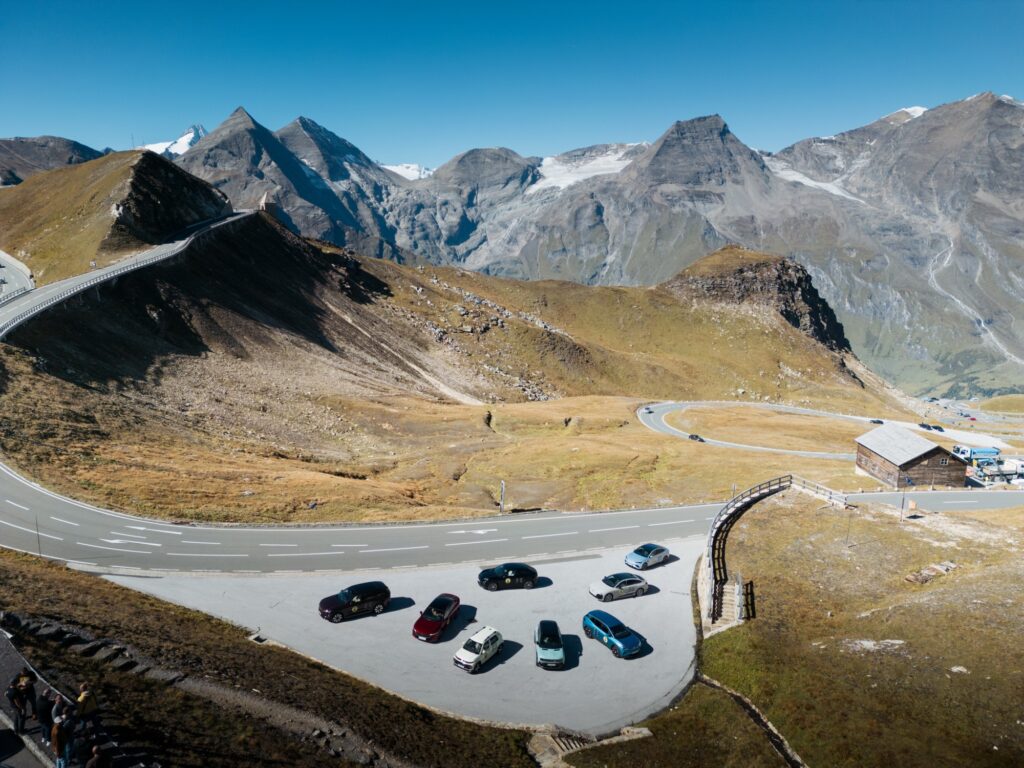
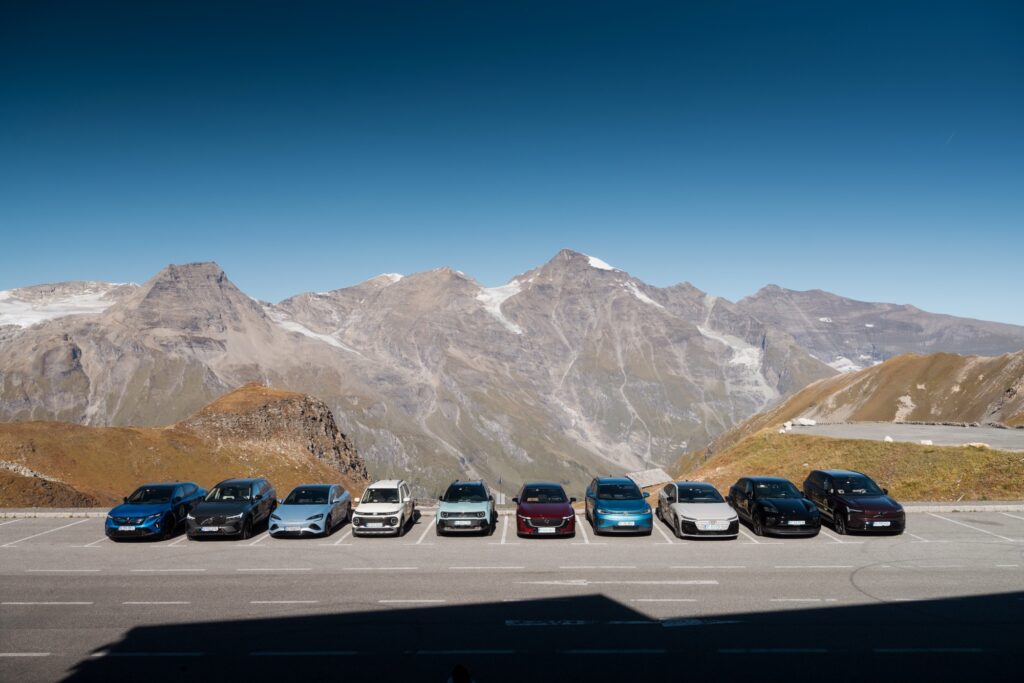
Past the toll barrier, the road begins to gently curl through a forest. Then the mountains appear. In front and on the left, towering peaks with white manes. You literally don’t know where to look first. Hairpins begin, perfectly labeled, including the altitude. The asphalt: impeccable. There are lookout areas everywhere, same for paved parking lots.
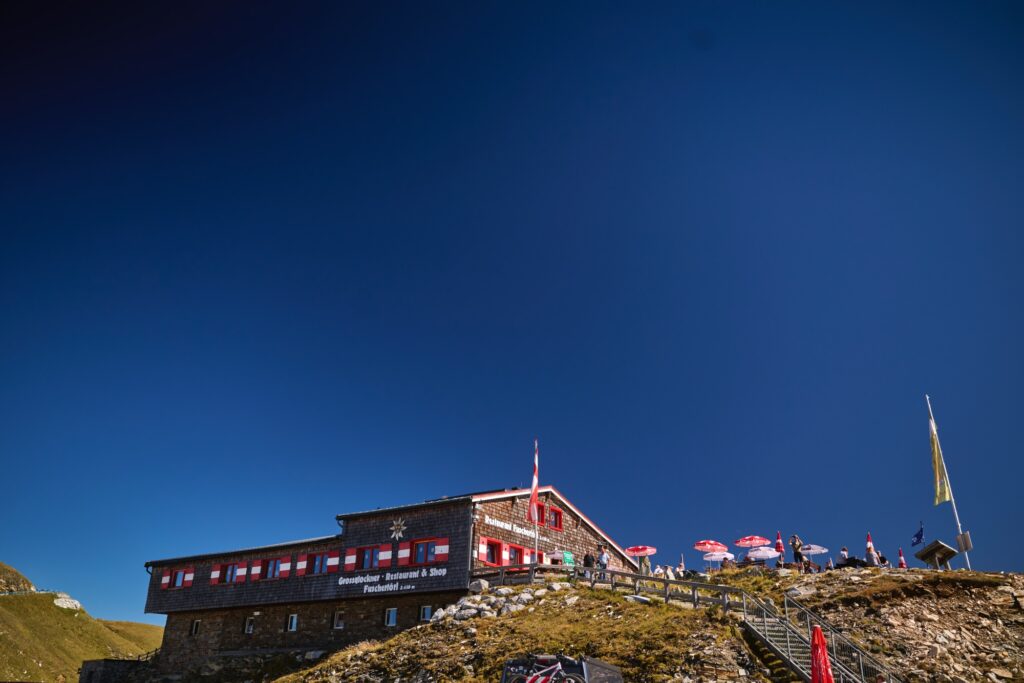
We continue on to Kaiser-Franz-Josefs-Hohe, another incredible landmark. We climb, turn after turn, to a glacier sitting at an altitude of 2,369 meters.

We left the Grossglockner Hochalpenstrasse with broad smiles on our faces. And one conclusion: we’ll be back!
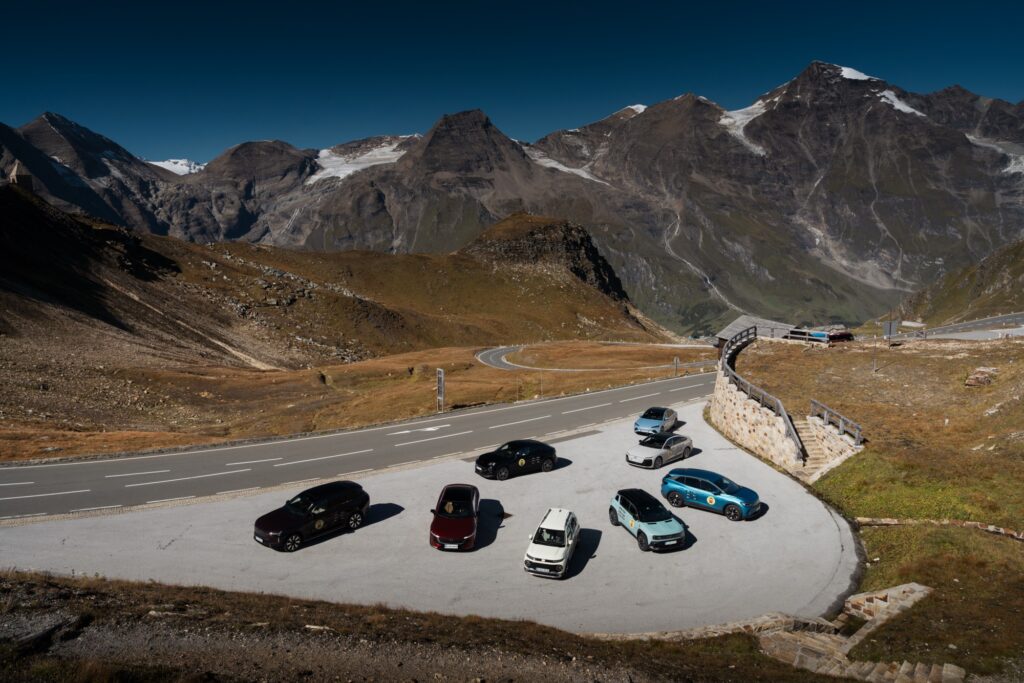
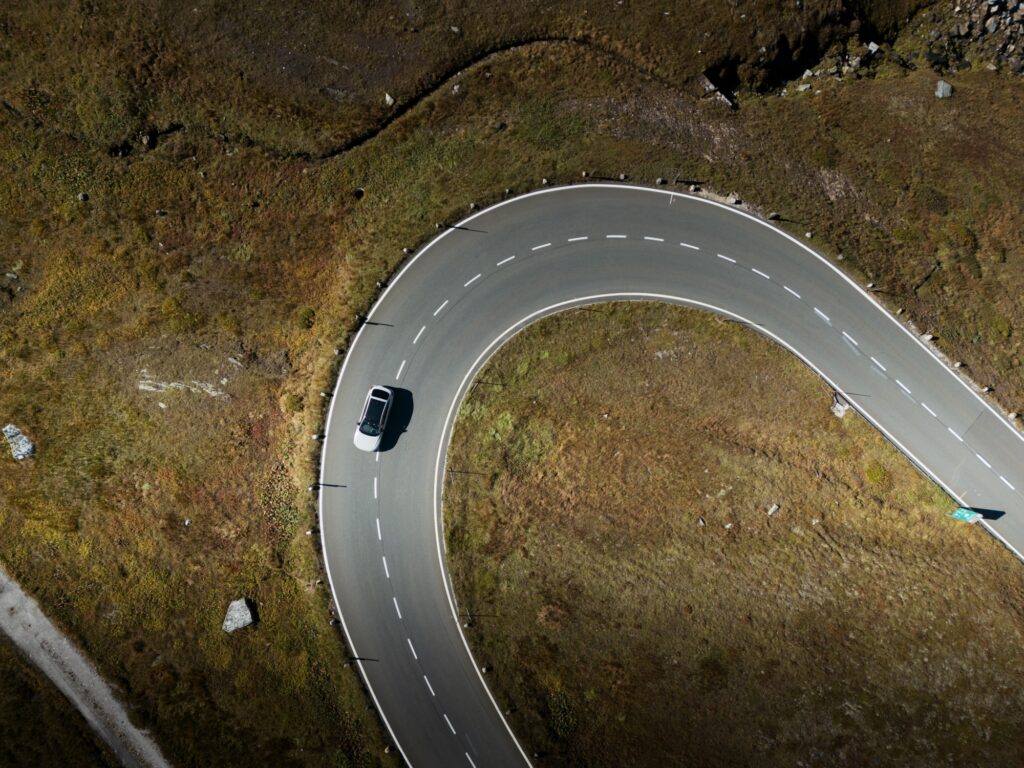


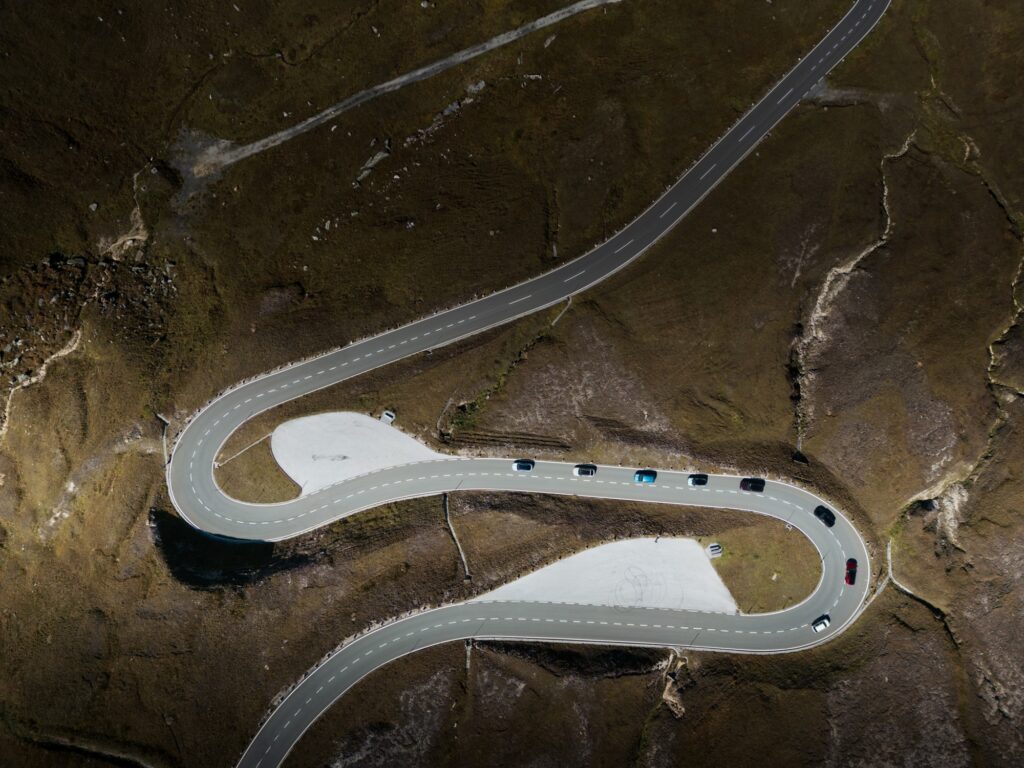
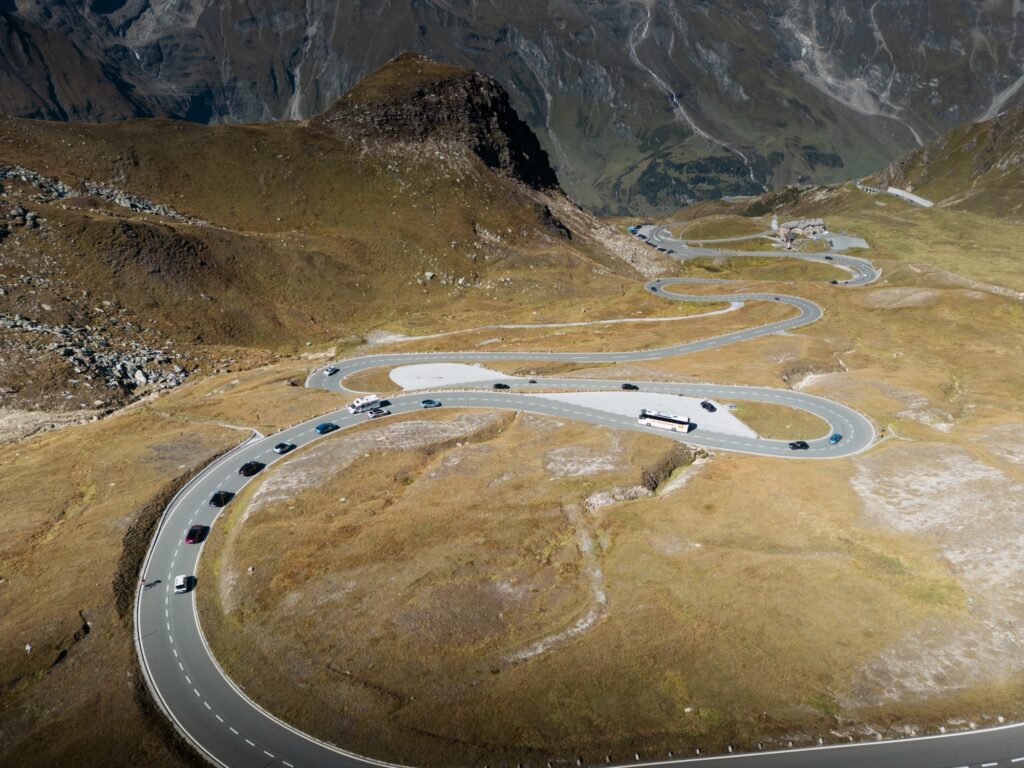
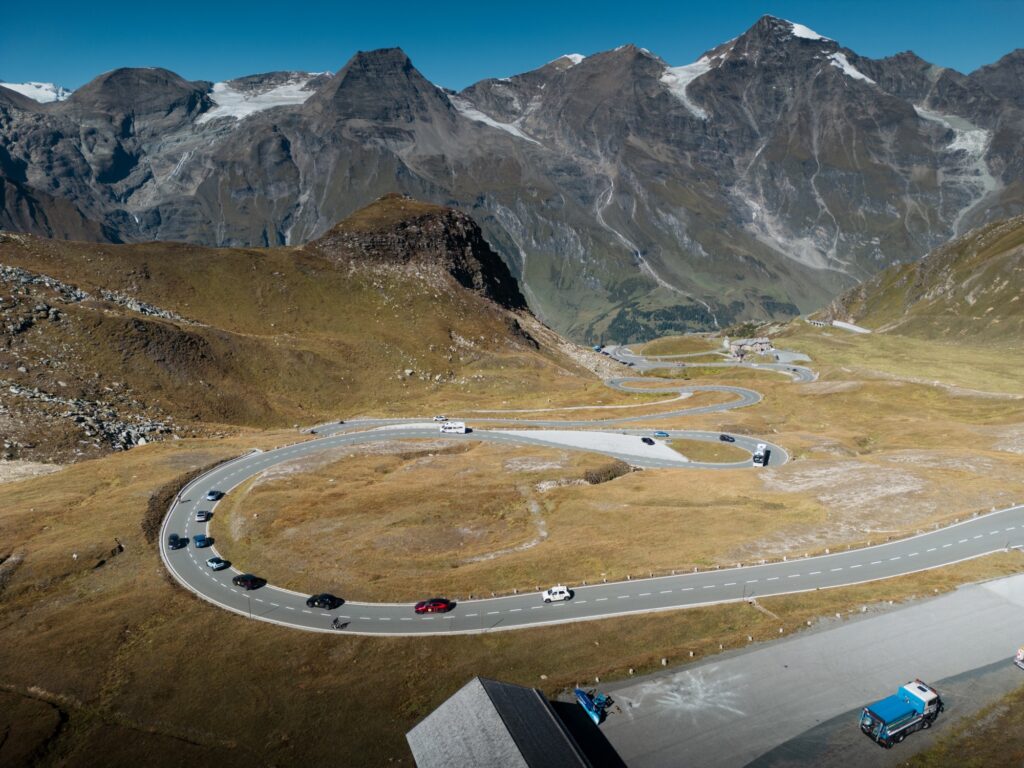
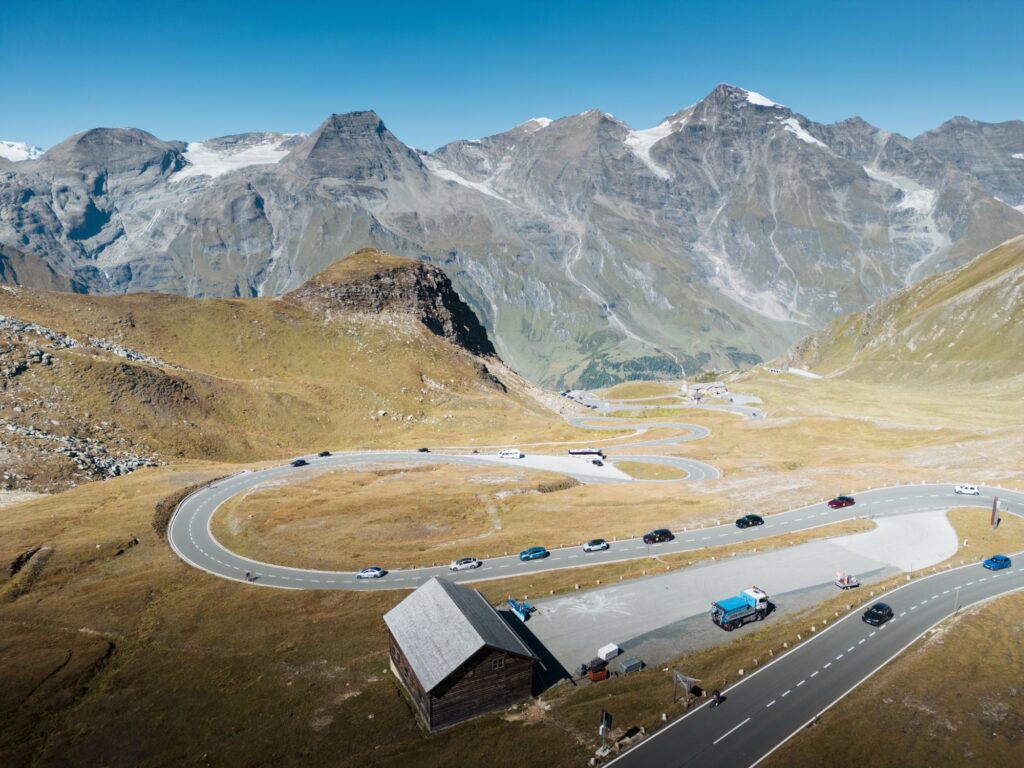

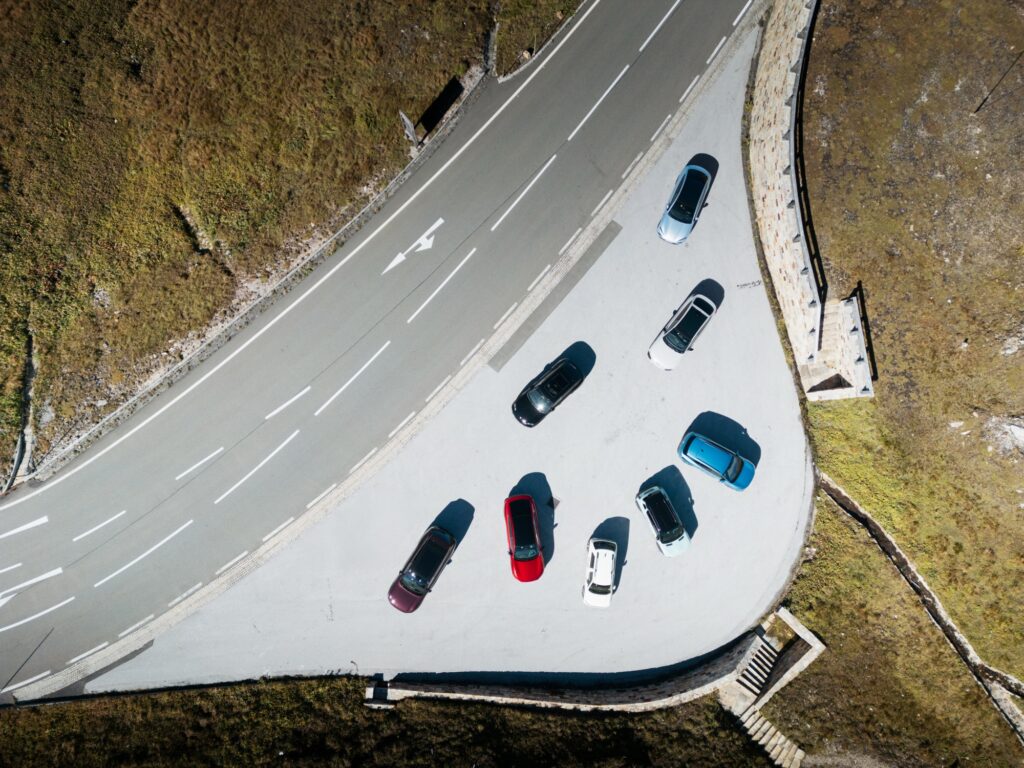
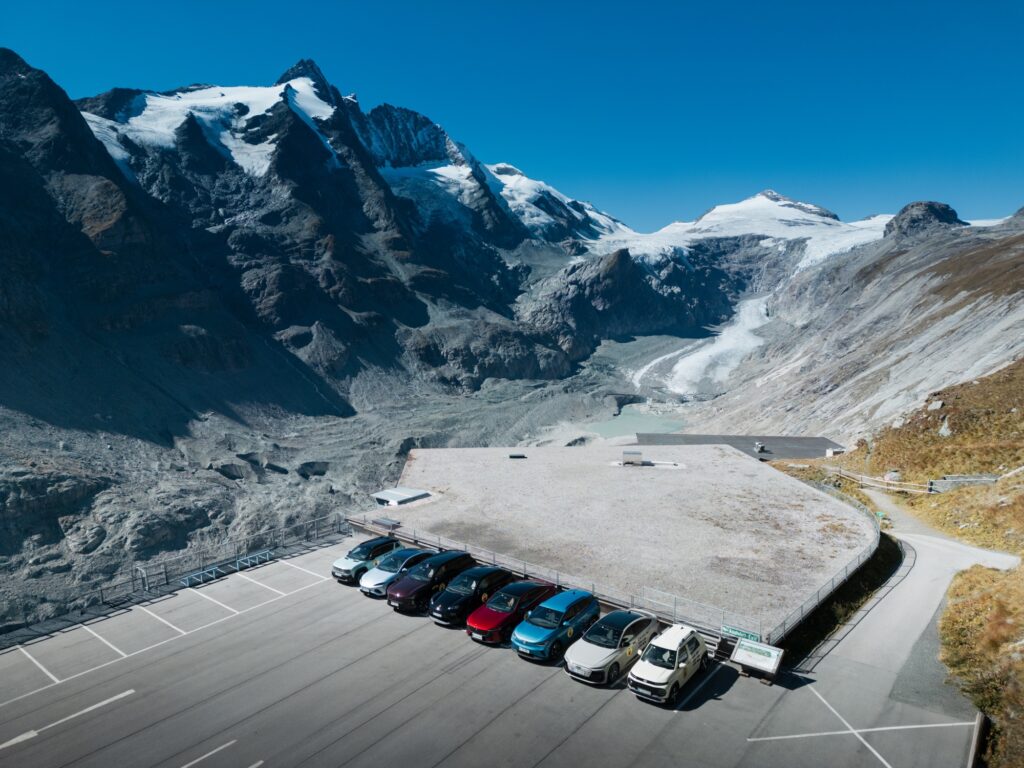
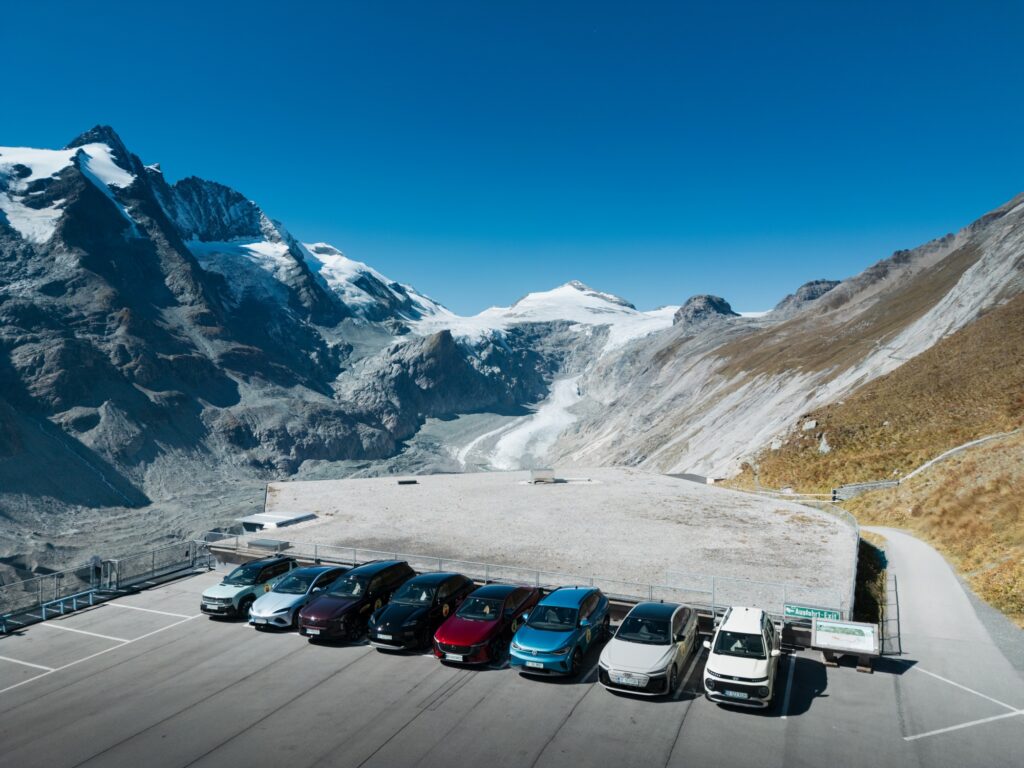
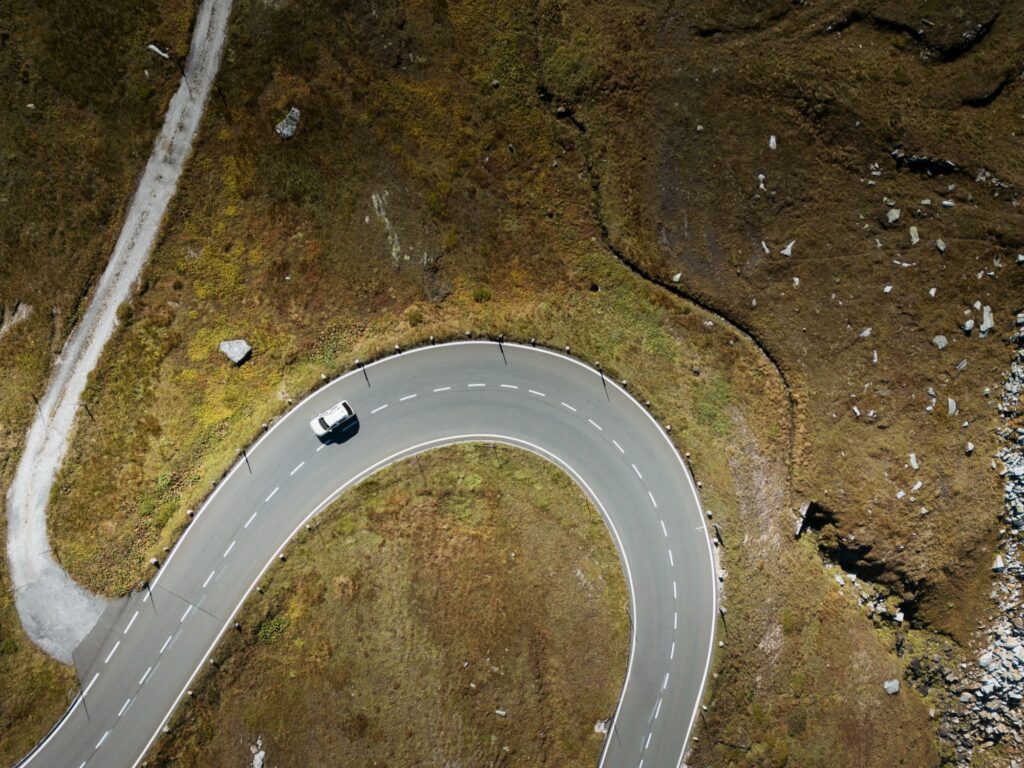

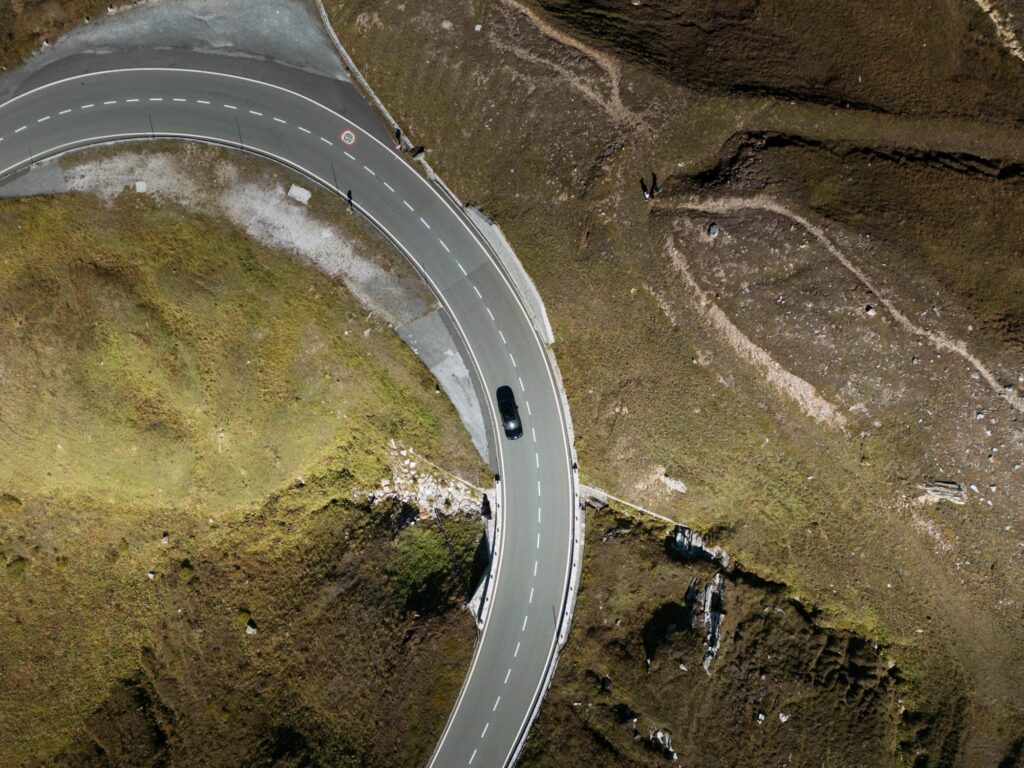
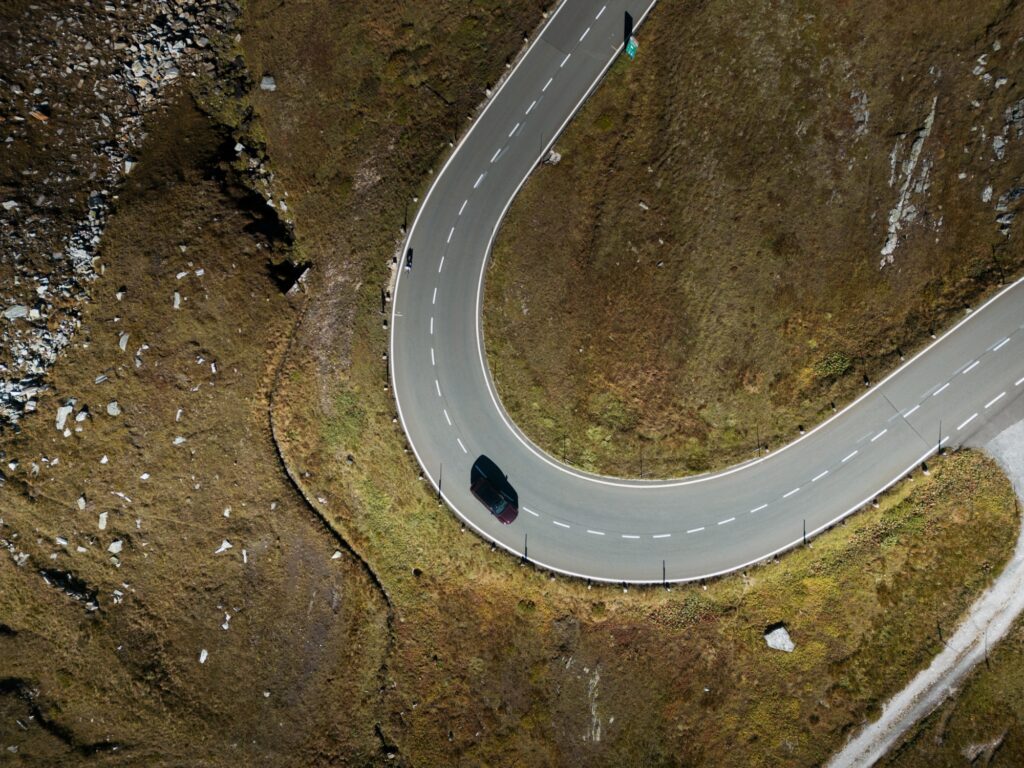

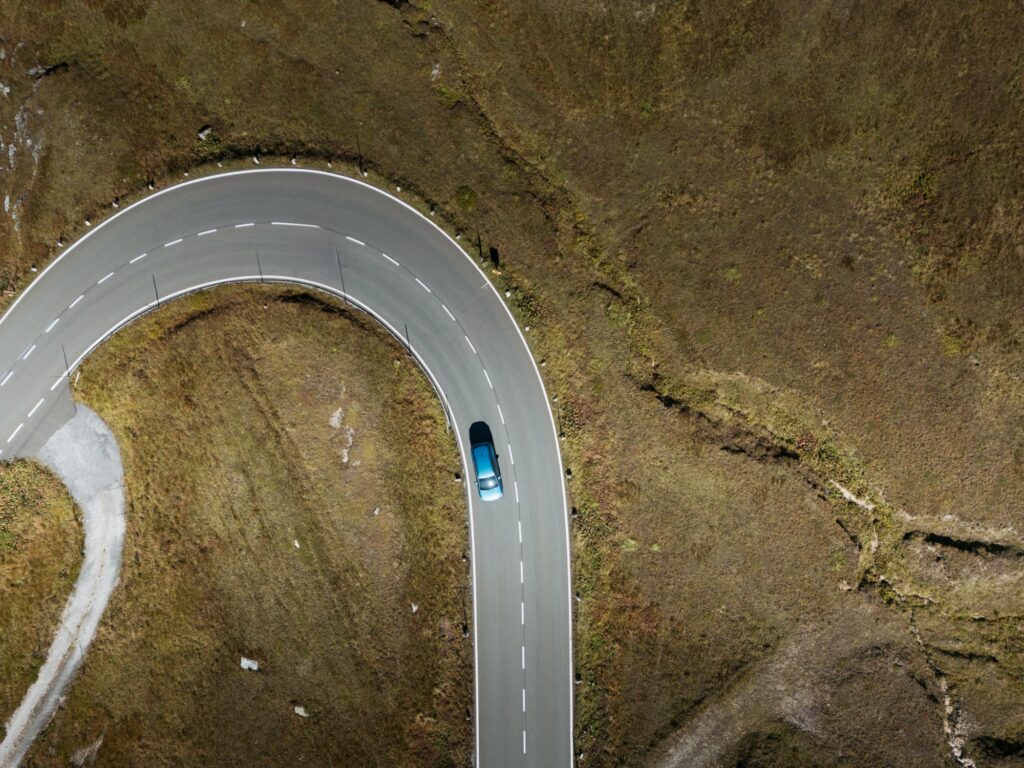
To Switzerland
We decided that the Grossglockner Hochalpenstrasse was so beautiful that we came back the next day. Normally, we would have gone on to Switzerland, but Austria charmed us so much with its impeccable roads, raw green hills and postcard-worthy landscapes that we decided to spend the transit day to Switzerland on the most beautiful roads we could find.
Then, after a well-deserved lunch break, we headed for another important Alpine road: the Febertauernstrasse. This is a much busier mountain road, a major artery you might say. It doesn’t have the spectacular mountain scenery of its bigger brother Grossglockner Hochalpenstrasse, but the beauty of the typical Austrian scenery and the pleasure of driving on this road cannot be ignored. It starts with a long tunnel and then winds gently through the Austrian hills. There are 36.3 km of wide bends between the towns of Lienz and Mittersil, and the highest point is 1650 m above sea level.
And just when we thought we were done with the gorgeous scenery and getting ready for the highway, another surprise. From Mittersil, we headed to Zell am Ziller. Between the two towns, a new alpine road: Gerlos Alpenstrasse. A road that starts smoothly, passing through picturesque villages with typical Austrian houses perched on the hills. Then, like a musical crescendo, it reserves its best for last: an impressive climb pigmented with a long series of hairpins.
From here, our road took us to our next stop: Arosa, Switzerland. But until here, we made regular stops with our friends from OMV in Zell am Ziller and Pettneu am Arlberg, where the cars were fed with electricity and the people with good coffee and possibly a sandwich.
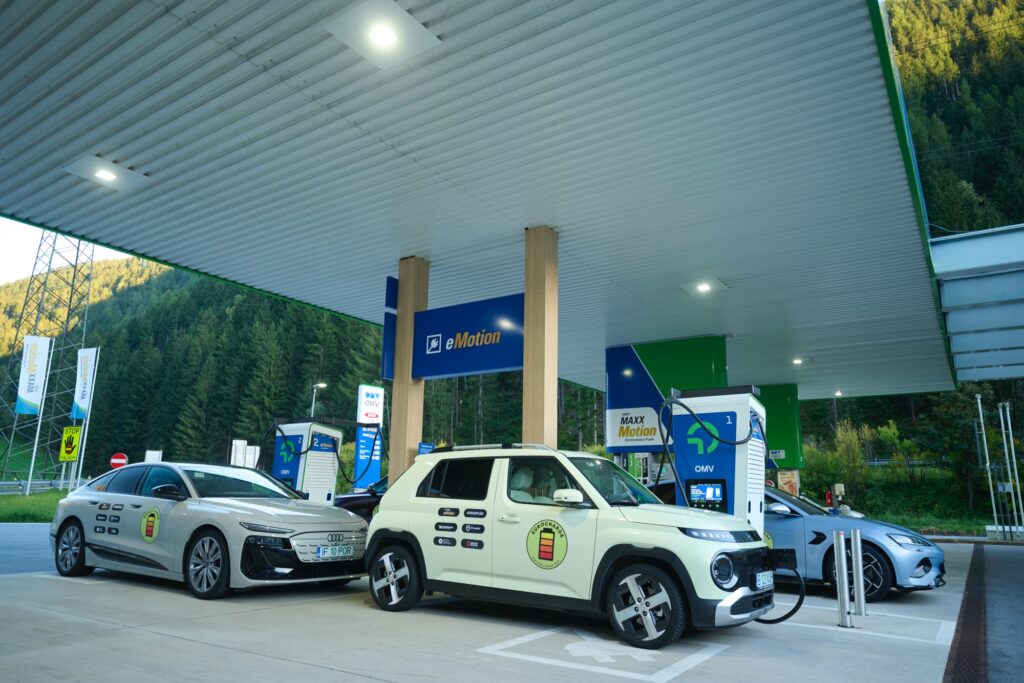

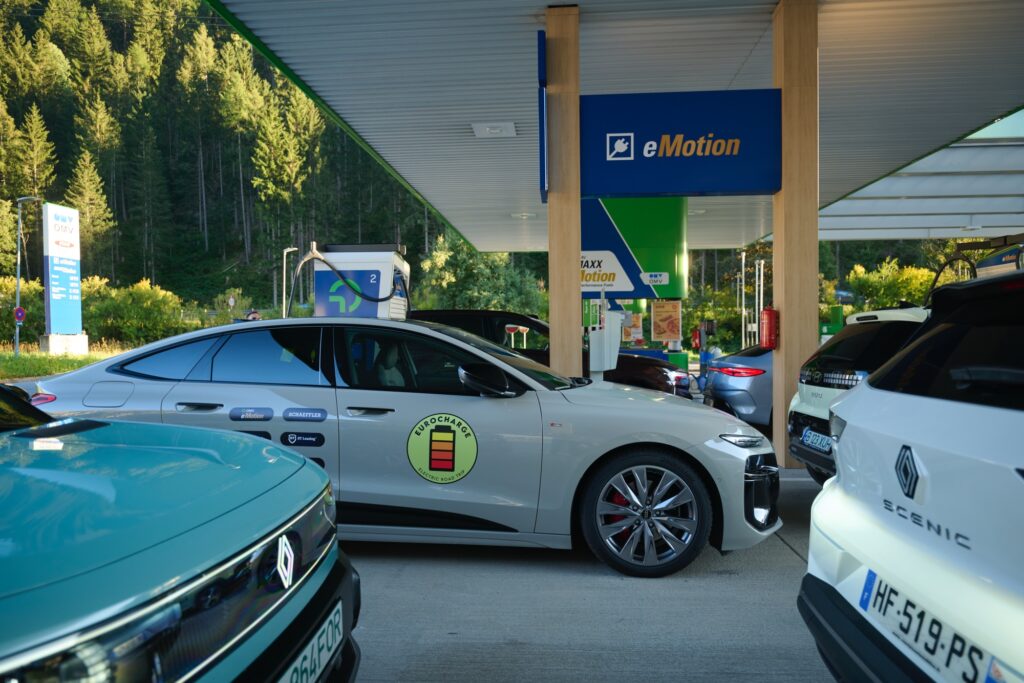
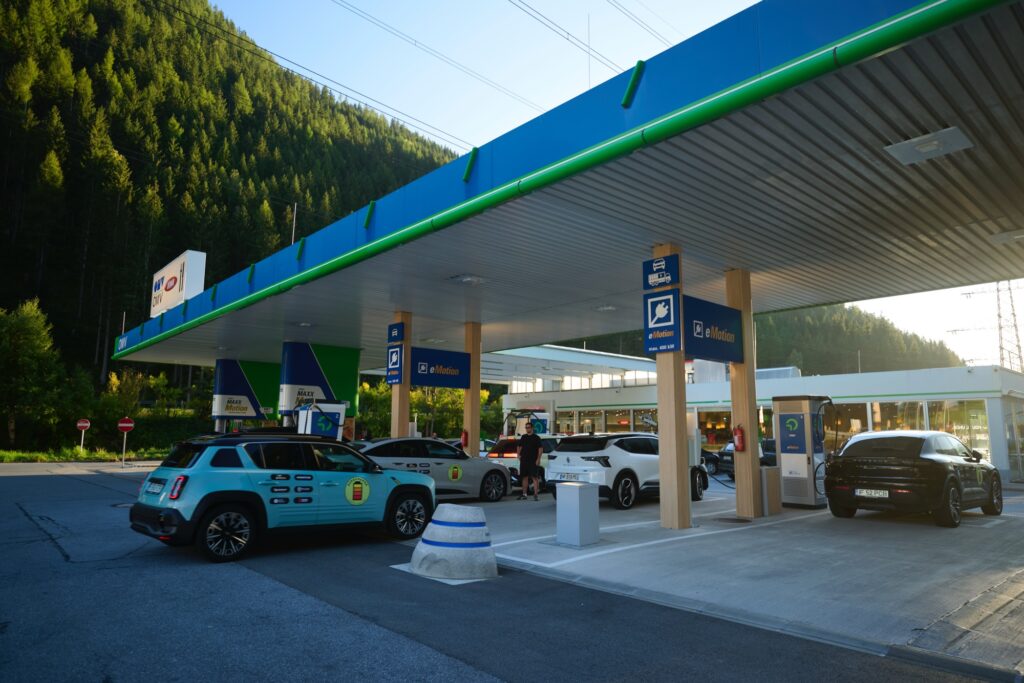

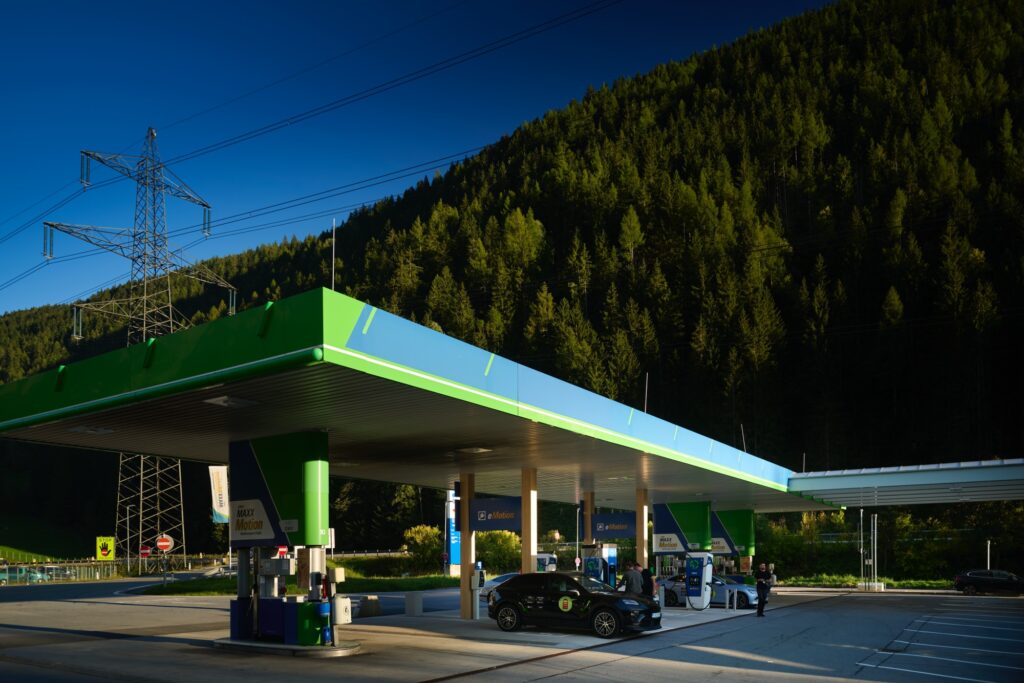
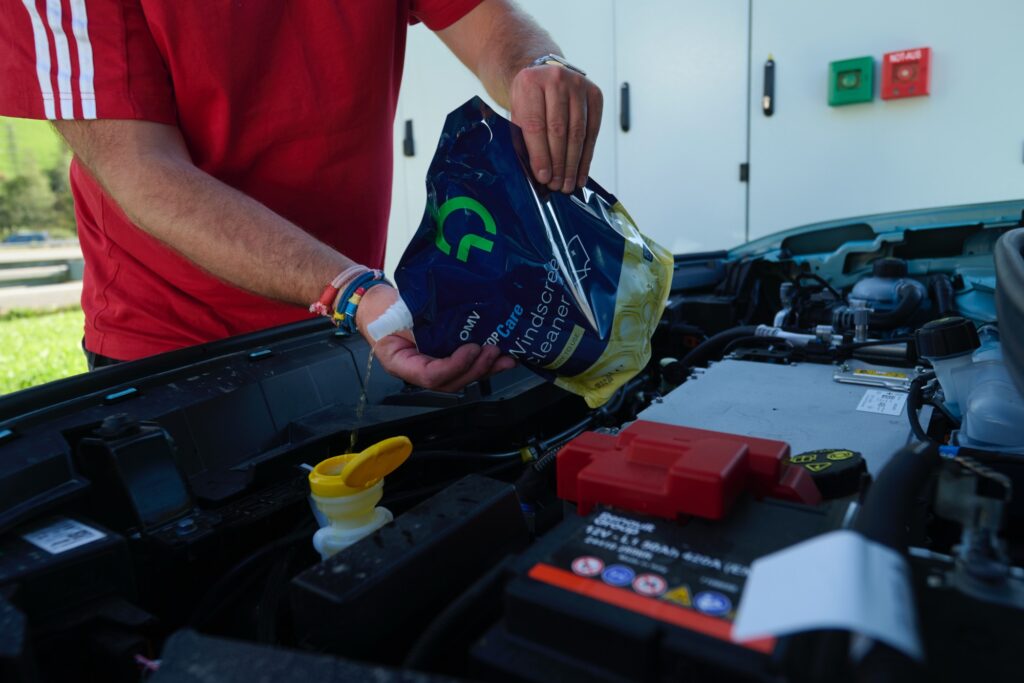
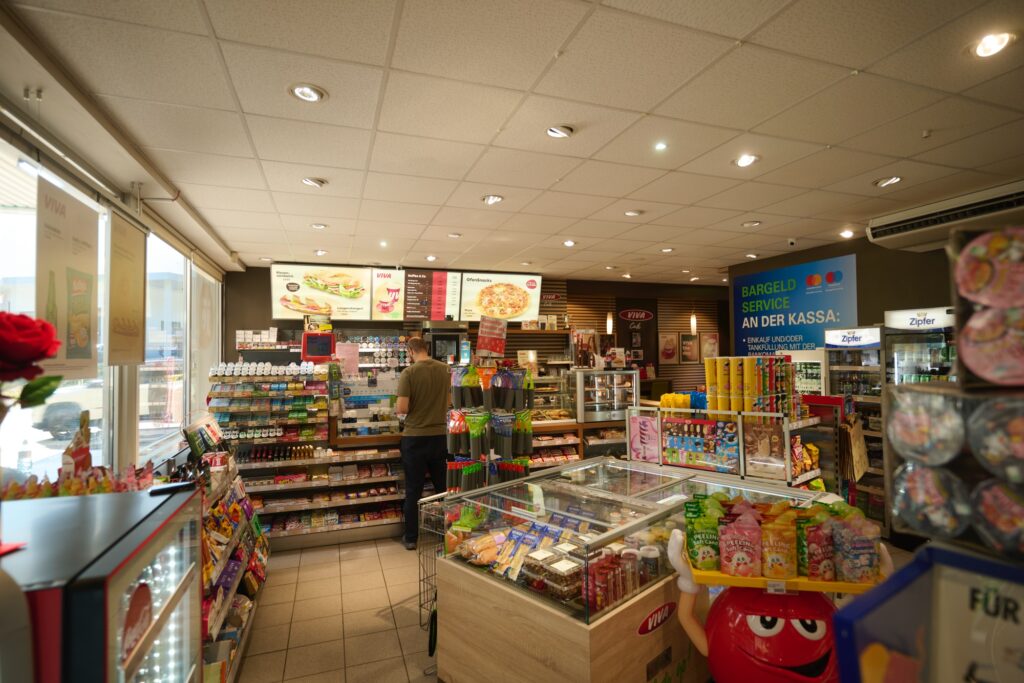


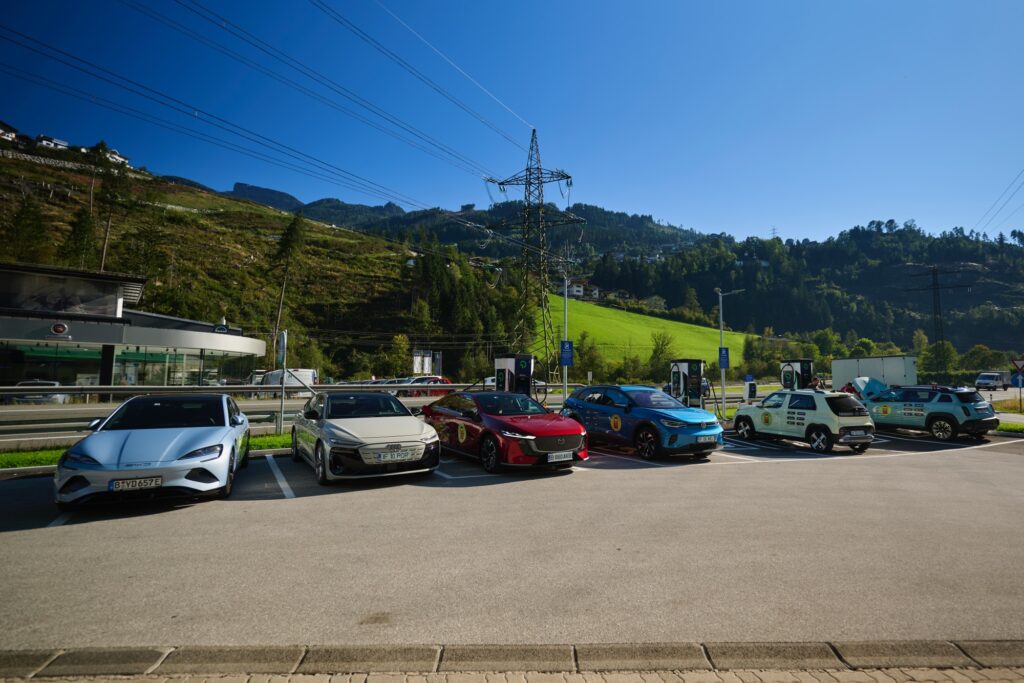
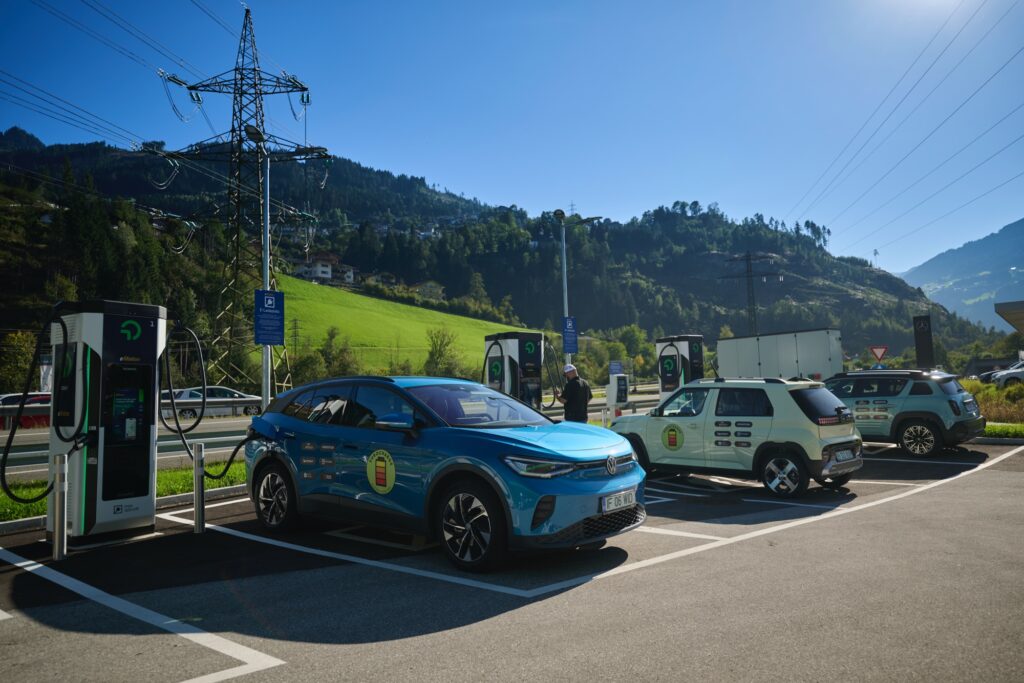
Michelin CrossClimate 3
We can’t end the Austrian mountain experience without mentioning one extremely important element found on all of the eight EUROCHARGE by Schaeffler cars: the tires.
The Austrian experience tested our ability to absorb the beauty of mountain landscapes, but it also put tires to the test. After two days on the highway, the Michelin CrossClimate 3 met the alpine passes. The temperature variation between the Saalbach and the Franz Josefs Hohe summit at 2,369 meters was not too high; the weather was excellent. It was sunny and the thermometer read 15 degrees Celsius at the summit. But we might as well have had cold rain and temperatures below 10 degrees. And Michelin CrossClimate 3 tires are designed to perform in all seasons.
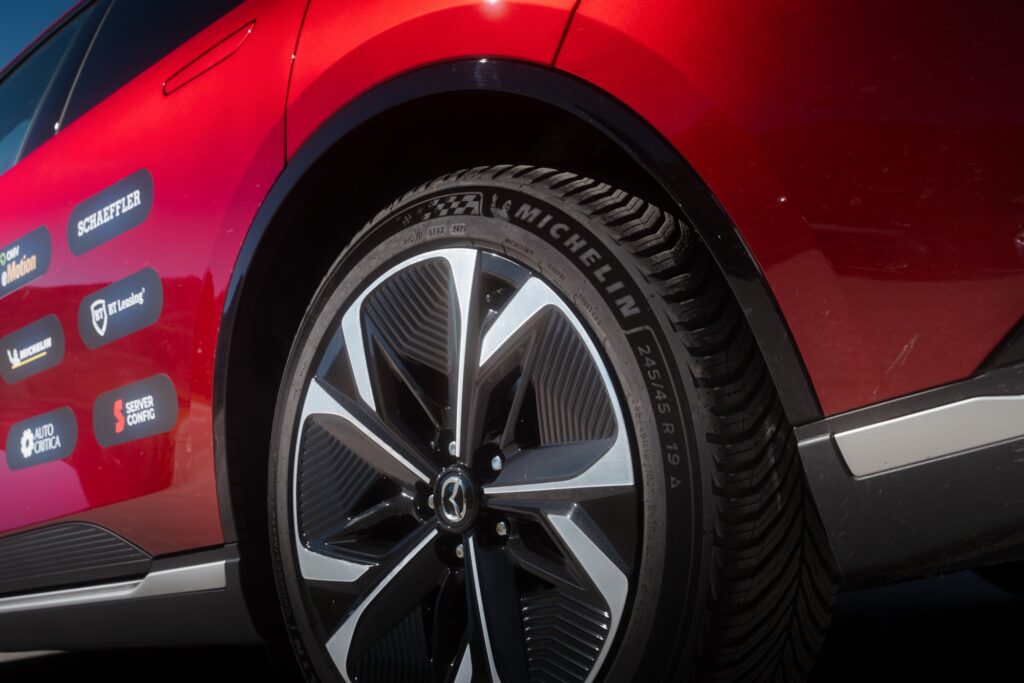
The first generation of CrossClimate tires was launched in 2015, at a time when some 12 million all-season tires were being sold annually in Europe. Even if the decision seemed risky at the time, the strategy proved to be an inspired one, as it allowed drivers to enjoy a single set of tires all year round, regardless of the weather conditions.
Subsequently, the second generation CrossClimate was launched in 2021, with the main focus on maintaining performance and launching a wider range of sizes to enable widespread adoption of all-season tires.

For the new generation CrossClimate 3, one of the objectives set by Michelin’s engineers was to increase the contact patch, i.e. the surface in direct contact with the ground, and to design a V-shaped groove to optimize water evacuation. The result? Grip has been improved by 4% on wet surfaces compared to the previous generation.
Gabriel Nica (Cu și Despre Mașini) on the Audi A6 Sportback e-tron
After day two’s experience with the Swedish limousine disguised as an SUV, i.e. the Volvo EX90, I have to admit that I didn’t think there was a car on this tour that could go even higher.
Well, the Audi A6 has done it. And it succeeded primarily thanks to the excellent platform on which it’s built. In fact, its name raises your expectations right from the start: Premium Platform Electric. And yes, in terms of performance, the A6 is a premium product.
Just a few kilometers on board and you can see why. The suspension is sublime (well, the roads in Austria aren’t exactly to be sniffed at either), the performance is there all the time, and the technology simply spoils you. From the augmented reality head-up display that guides you perfectly on the road, to the impeccably tuned driver assistance systems, everything works in your favor.
Charging is so fast and steady that you barely pause long enough to stretch your legs before you’re notified that your limo is ready to hit the road again. And we’re talking about a 95-kWh battery pack. And the consumption isn’t bad either, given the size of the car and the resources at the disposal under your right foot.
But I would have liked a bit more color inside and a bit more attention to detail, given the 100,000+ euro price tag of the model we tested.
Cornel Șocariciu (Autocritica) on the Audi A6 Sportback e-tron
The German model follows a recipe that felt much closer to that of a grand tourer. Comfortable, angry if you’re asking for it by slamming on the accelerator and frugal when it comes to energy consumption. And that’s just the way it is. Because the Audi-style interior (with good finishes and quality materials) is now packed with state-of-the-art technology: from the augmented reality head-up display to the three screens that wrap around the dashboard, from the intelligent braking energy recovery system to the 16-speaker Bang & Olufsen 3D audio system.
I know it’s a cliché, but the A6 Sportback e-tron really is a technological showcase. And it’s the 800V platform and the large 95-kWh battery pack that make a major contribution.
A few lines above I mentioned efficiency. On the almost 550 km route (which included the two alpine passes) I found the average energy consumption to be excellent, on all scenarios: highway (with some stretches plagued by road works), B roads, mountain roads and even urban areas (but not so many).
All in all, the A6 Sportback e-tron is the EV that the German automaker needed to stir public interest. Especially the ones who loves piano black and can easily spare 100,000 euro.
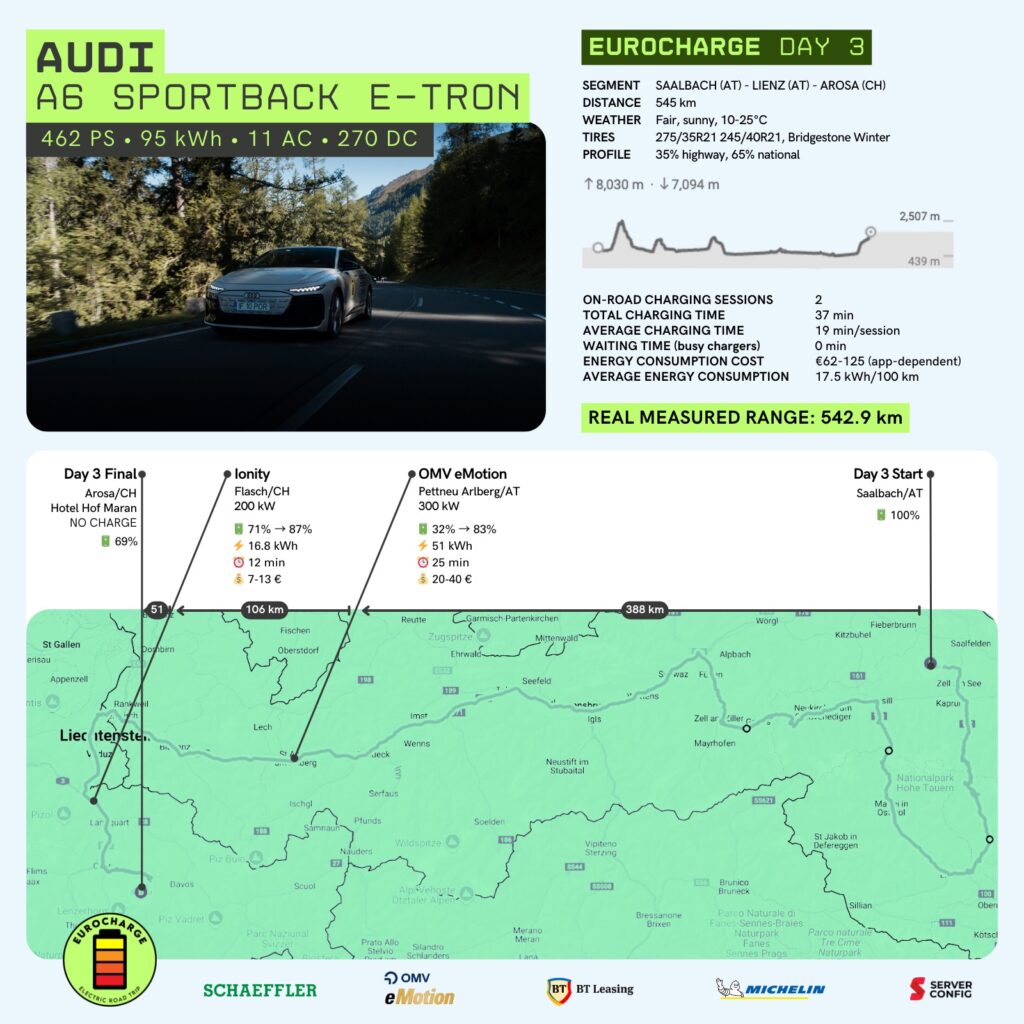
Mircea Mester (Autocritica) on the BYD Seal
When I picked up the keys, there was no expectation. Zero. Maybe a little curiosity for the 530 hp on the spec sheet, about as much as you’d have for a movie you haven’t seen the trailer. I figured I’d let it run, see what it’s all about.
After 400 kilometers behind the wheel, I can say this: the BYD Seal is, to me, the revelation of the EUROCHARGE tour. And that’s not because when you have no expectations, things tend to be good. But because the car runs so well, that there are extremely few things to criticize.
For example, it feels balanced on the road. It’s heavy, but not like a burden, more in the sense of a product that feels like quality, without question. It feels like an expensive product, well put together.
Inside, the Chinese have done a job that, I regret to say, some posh European manufacturers are still learning. It’s got Alcantara on the doors and dashboard and leather that feels great (probably artificial, but who cares, that’s the new standard).
And then there’s that huge screen, which swivels in portrait mode if you like. On it, I saw the most generous and well-integrated Apple CarPlay setup so far. Others are struggling to integrate the whole Apple ecosystem into their displays, here you have all the apps on the display right out of the box, not 10 pages to flip through until you hit Waze (I know you can customize positions from your phone, but when you get in a new car, everything resets).
Throw in a few other finer details that others haven’t even thought of – for example, automatically reducing the fan speed when you’re on the phone so you don’t hear the other person as if you’re in a cave – and you’ve got a high-tech package. The two wireless phone charging pads on the console work instantly, quickly and flawlessly, and the Dynaudio sound system is absolutely excellent. There was good music on Grossglockner Hochalpenstrasse today.
Obviously, not everything is perfect. The trip computer is a conundrum on the energy consumption side. It shows you the total consumption since the car first hit the asphalt, or the last 50 kilometers. And that’s it. Do you want to see how much you’ve used since you started the current trip? Uh, good luck. Those gorgeous screens get a bit dodgy in bright sunlight, you kind of struggle to see the figures like a grandpa without glasses even at maximum brightness. And the 150 kW charging power is decent. It didn’t bother me, but with how good the car is otherwise, you’d want at least 200 kW.
After going up and down the monster called the Grossglockner and another 100 km or so, the lifetime consumption of the car (which has almost 8,000 km on the odometer) dropped from 20.0 to 19.9 kWh/100 km. And after exactly 200 kilometers of running, I had 50% battery left.
The feeling I’m left with after today is that the BYD Seal is a very, very serious car. If you manage to get past the “made in China” mental straps, you might be in for a huge surprise. Especially if you’ve owned a Tesla before. Because frankly, Seal pretty much takes everything Tesla does and does it better.
Constantin Ciobanu (Autocritica, Adevărul Auto) on the BYD Seal
What I can say with certainty is that the marine theme BYD uses to describe the design is justified as far as I’m concerned. I feel like I’m looking at a machine from Aquaman. But I really like the interior, its fluidity, its aesthetic homogeneity. And it’s all accompanied by very good quality materials and assembly. The Seal scores excellent points for perceived quality, a detail that can be factored into the purchase decision when you have similar models in your sights in terms of price and performance.
Two things surprised me greatly. The first is the maturity of not trying to reinvent the wheel. You have a start/stop button that allows you to leave the car on if you have to get out of the driver’s seat, which is synonymous with leaving the air conditioning on (for example) if it’s hot outside and you still have passengers in the car. This kind of banality is rare on some brands.
Then the chassis calibration, the way the power is delivered, the intuitive steering, the pleasant brake pedal dosage, pretty much all the details that identify with operating an automobile. Extremely mature the whole package, and it gives you satisfaction both on a long drive on the highway, but also on a magnificent mountain road.
There are a few small details, especially in the infotainment system and the way some of the assistance systems react that deserve a little more attention. It would help the car get even better, because from a certain level, that fine attention to detail makes all the difference.
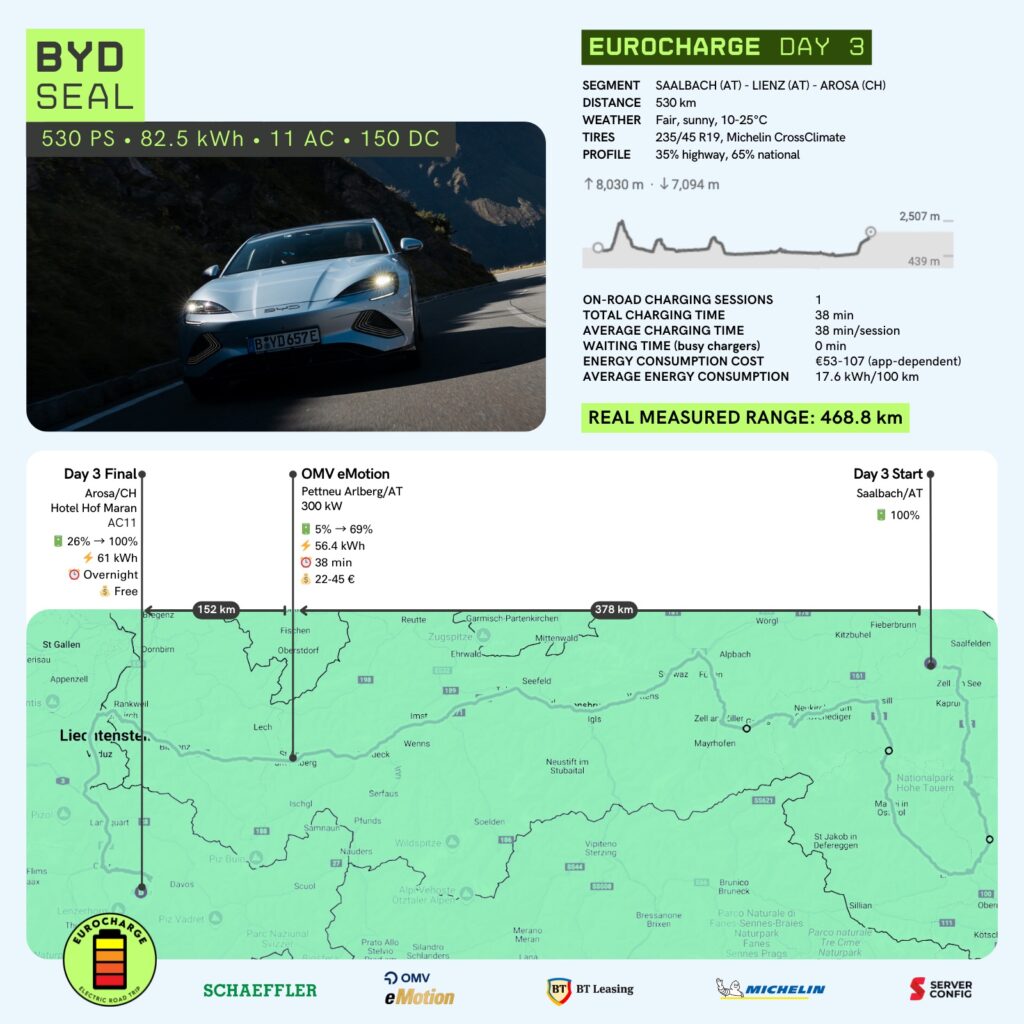
Tibi Buzdugan (Electromobilitate.com) on the Hyundai Inster
Since the Inster was launched I’ve been very curious about how the car feels to drive. After driving around in Dacia Spring and seeing them all over the streets of Bucharest, the emergence of a competitor that actually looks modern and doesn’t give you the impression that the only thing that was taken into account during the design was cost efficiency is welcome.
Sure, you don’t find wood, leather, merino or other crazy stuff inside, but what you do find is pleasantly colorful and gives you a sense of well-being. In the case of the model we had, the interior is very brightly colored, complemented by a checkered textile upholstery. Contrary to the ‘city car’ characterization, on our first day of alpine passes, it acquitted itself well. Even more than that, we really enjoyed the twisty roads.
In Sport mode, there’s enough torque and zip up to 80-100 km/h that you don’t feel in any way that the car is limiting you. Maybe only in overtaking big cars do you hesitate a bit, as you know it takes longer than a more powerful car, but I’d say it feels equivalent to a car with a thermal engine with at least twice the horsepower. And the very low center of gravity makes the car extremely stable and predictable in corners, although the narrow width doesn’t help it.
What you see when you sit in the front seats is not at all what you’d expect from a small class car (I didn’t say cheap, because no new car is cheap these days): the infotainment system has two screens with very good resolution, you’ve got adaptive cruise control with highway assist (in addition to distance to the car in front, speed and lane keeping, it recognizes speed limits and automatically adapts speed), you’ve got heated seats and steering wheel, you’ve got wireless phone charging, pretty much everything you’ve got on the bigger siblings in the Hyundai range (Kona, Ioniq or Tucson/Santa Fe if you’re referring to the heat-engined cars).
The only thing it doesn’t excel at is going 130 km/h on the highway and carrying more than 2 people or IKEA furniture. For someone who doesn’t need that (usually), I’d say it’s a sufficient and very efficient car.
Andrei Nedelea (InsideEVs.com) on Hyundai Inster
Looking at the Hyundai Inster, I get a feeling of joy. The car doesn’t try to be aggressive, it doesn’t tempt you with sharp angles, it looks like it wants you to be happy. Eyes on the windshield would be missing and it would be a character from Cars. But the unusually proportioned and detailed body conceals a surprisingly good mechanicals and specs.
It’s the car with the smallest battery in the Eurocharge 2025, a 49 kWh total capacity battery that allows it to go about 350 kilometers on a full tank. On tour days when motorways dominated, the Inster had to stop more often than the other cars to charge, but today when it climbed the Großglockner Hochalpenstraße, a spectacular pass that passes 2,500 meters altitude, the shorter range didn’t matter.
It was a revelation in the corners, with surprisingly communicative steering, well controlled roll and enough torque to get out of corners surprisingly spirited. I wasn’t expecting it to be a fun car on a twisty road, but it managed to make me smile. It’s clearly not a car designed for a sporty driving style and yet it handled admirably, confirming, if proof were needed, that Hyundai is a manufacturer that puts a lot of know-how behind all of its models, even the smallest.
And I found more to smile about in the Inster. The interior is surprisingly spacious for a car with a 2.58-meter wheelbase. Somehow Hyundai has managed to make the cabin feel big. The feeling of spaciousness is largely due to the fact that the roof is very high and you have a lot of headroom, which makes the whole interior feel bigger. It’s just like a studio flat in an inter-war apartment block with a high ceiling, which doesn’t give you the same feeling of claustrophobia that you get in a 1960s apartment block with the same floor space, but much lower.
Not only do I have backseat room behind me with the driver’s seat in my driving position-I’m 1.83 and hold the seat pretty far back, but the knee room was remarkable for such a beast on wheels. We also somehow managed to squeeze two large suitcases into the Inster’s trunk. We could have slid the seat forward to get even more trunk space, but we didn’t have to.
I started the day driving below 80 km/h (urban and national roads) and the consumption was below 10 kWh/100 km, but it increased to over 26 kWh/100 km when I reached the highest point on the Großglockner. Then on the descent using the paddles to modulate the regenerative braking I didn’t use the brakes very much and reduced the consumption considerably, which stabilized at 17 kWh/100 km and by the time I reached the hotel in the evening the consumption had dropped to 14.5 kWh/100 km, which is absolutely respectable considering that I was doing a lot of highway driving at over 100 km/h and that the last 20 km was a climb worthy of a coastal speed stage.
I can’t fail to mention how well the Inster charged today. Connected to a 300 kW charger that it shared with the BYD Seal, it charged at a steady 80 kW, and even when it was around 70%, it was still pulling over 70 kW from the station. A very good charging curve for a car whose maximum charging power is 85 kW. All in all, I liked the Inster and it showed me that it’s not a problem to take such a small electric car out for a long drive. You don’t need to drive it slower, below the speed limit on the highway, and you can cover hundreds of kilometers without any problems.
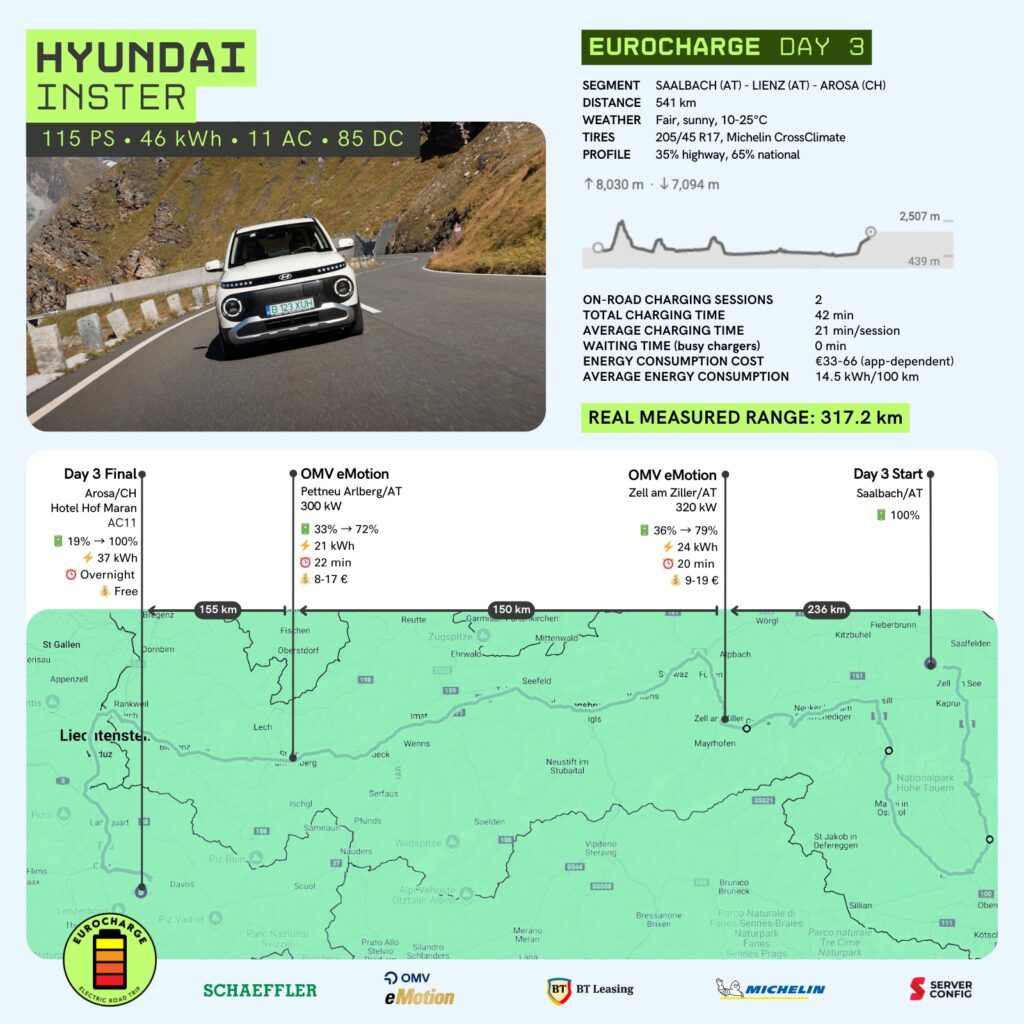
Alin Ionescu (Mașinistul) on the Mazda 6e
After 12 years on the market with a midsize sedan that stayed fairly aloof from the digitization and electrification trends, Mazda has gone straight to a fully electric limousine that marks perhaps the biggest leap ever made by a car from one generation to the next.
The new Mazda 6e isn’t just fully electric, it’s also fully digital. And that, I think, will be the biggest shock for traditional customers. From physical controls, studied ergonomics and minimalist displays, Mazda is moving to a nearly 15-inch touchscreen where all the controls are integrated. Including headlights, wipers, hatch sunshades, everything. But coming from a Tesla, you’ll feel right at home. And you’ll discover a truly premium interior.
In Takumi Plus trim, the 6e really impresses with its beautifully crafted interior, with Alcantara upholstery and cognac-colored faux leather covering the seats, door panels, part of the dashboard and the center tunnel. And it not only looks good, it feels luxurious, solid, well put together.
Returning to the fact that Mazda’s limousine has switched to full-electric power, the version tested in EUROCHARGE, the one with the ‘small’ battery, is probably also the one that will sell best. 68.8 kWh is enough for a real-life range of 300 km, even a bit more in DN or urban driving. But this is the fastest-charging version (max 165 kW), which means that stops of 30 minutes or less are enough to run another 200 km.
It should also be said, at least as a footnote, that this Mazda is made in China, and is based on Changan’s Deepal L07. It’s true that Changan and Mazda have a long-standing collaboration, and the car’s design looks quite natural, with plenty of Mazda-specific details and elements (my favorite being the taillights reminiscent of the RX-7 FD) but some might view this model as carefully disguised badge engineering.
Laura Antonov (LaChicBoutique) on the the Mazda 6e
It’s been a long but mostly challenging day (in terms of the route chosen), and the conclusion would be that I’m glad I spent it behind the wheel of the Mazda 6e. Why? Because it’s comfortable, first and foremost – the seats are perfectly supportive and contoured, and the electric adjustments help you quickly find the ideal position to make the journey a pleasure.
All the interior materials give the impression of premium, quality and attention to detail, and are extremely good-looking as well as pleasant to the touch. It is a car you get into with love and curiosity to discover all its secrets. And while we’re on the subject of secrets, I wasn’t thrilled at first glance by the absence of physical buttons – I find it harder in the morning to get into an explorer mood in search of climate, headlight or wiper settings, but during the day I was convinced that the Mazda 6e owner will have no difficulty using it once he’s used to it, they are somehow logically organized and clearly marked.
I like the way it handles corners (the Michelin CrossClimate 3 tires probably help), I didn’t have any qualms about tackling the steep climb to Arosa, which did give us a bit of a fuel consumption problem. At the end of the day, we averaged 16.3 kWh/100 km and only one charge (just enough to walk a few steps and grab a coffee to go from VIVA) over 531 km.
In short, the Mazda 6e wins you over at first glance with its design, convinces you that you’ve made a good choice with the premium materials inside, and isn’t bad on fuel consumption either.
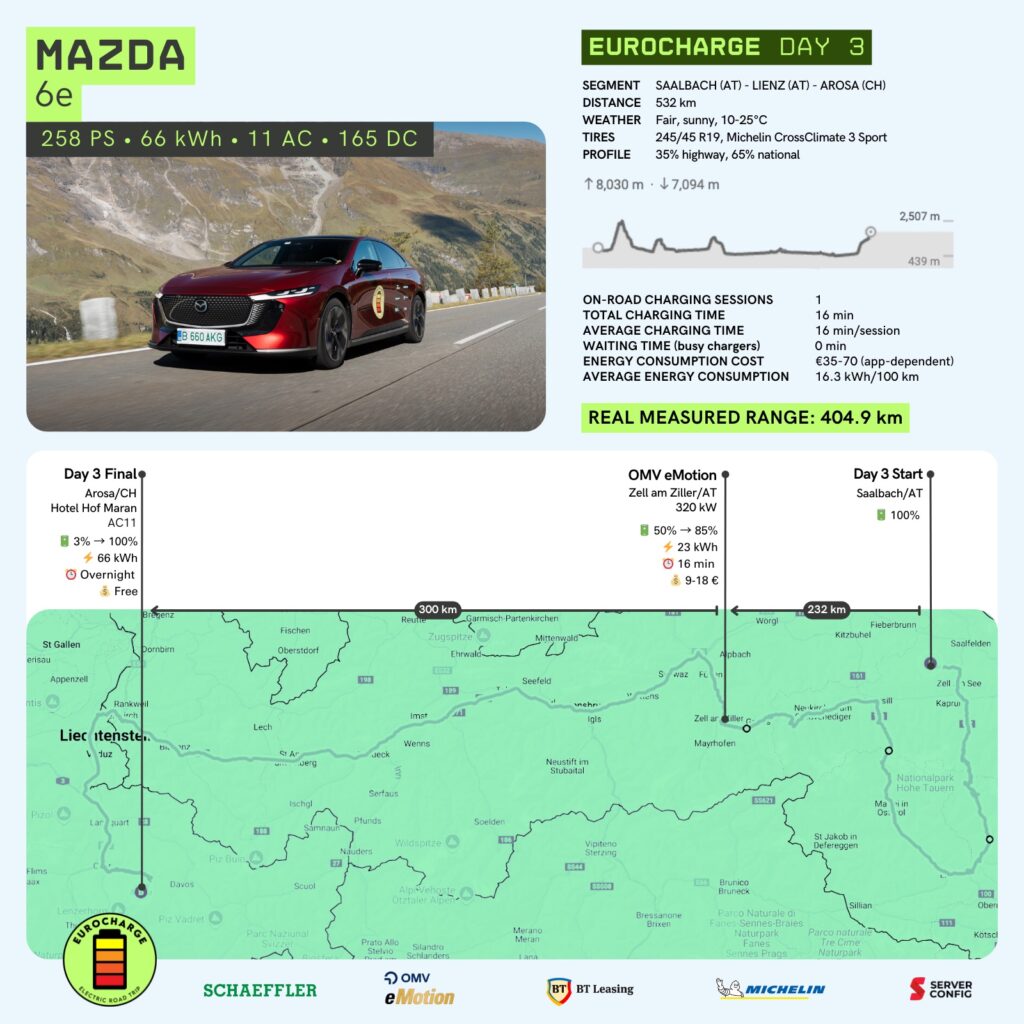
Radu Gurămultă (Autocritica) on the Porsche Macan
Normally when you say Porsche you think lightweight. It’s been the letter of the law throughout the ages, from Mr. Ferdinand onwards.
However, lo and behold, times have changed a lot, and the Macan 4, here, weighs in at 2,330 kg (kerb weight). Good, except before you freak out, know that Porsche’s engineers have managed some sort of spell, otherwise I can’t explain why you’d never suspect you’re squeezing a vehicle weighing over 2 tons. And it’s not just because the 408 hp helps, it’s because the handling is delightful, even hard to comprehend at times for those who’ve driven cars of considerable weight. The way it moves through the corners, especially the way it wiggles, can hypnotize you; and it’s not top of the range, let’s be clear about that. The steering communicates very precisely, even in the classic version (no rear-steering axle), so it all forms an alliance that’s hard to challenge from other makes. On the long haul, on twisty stretches, on the highway, anywhere, the Macan 4 is as Porsche as Porsche can be, and that will likely translate into sales figures that carry on the success of the first generation, which contributed massively to the 1 million mark for the company’s youngest SUV.
Otherwise, the interior atmosphere is very pragmatic, you have everything you need, where you need it, easy and very logical to use, the seats are ideally contoured, the driving position is excellent for dynamic starts, everything attests to Porsche’s expertise in building cars with pure sporting spirit. And all to the liking of electric lovers, with the potential to convert even the most skeptical, and as a bonus, with plenty of room for luggage and more than two adult passengers (sorry, 911 and 718!).
Dan Scarlat (TopGear Romania) on the Porsche Macan
The Macan 4 comes with all-wheel drive and, although it’s only an intermediate power version (408bhp), it pulls harder than you’d need on any public road, even downhill. It’s an SUV, but its low center of gravity allows it to deliver thrills on tight mountain corners, provided you don’t jerk it and cause sudden shifts. It can also be brutal, but you should probably go to a few Porsche Experience driving courses before pushing its limits on your own.
Being a mountain road (what goes up must also come down), the Macan also scored on efficiency. After more than 100 kilometers since leaving the hotel, it had consumed only 15% of the battery, a sign that the regeneration system is working perfectly and that such a mixed route can be tackled without any worries. After the twists and turns, we entered the highway, where the Macan turned into a true GT, with impeccable ride comfort, well-filtered suspension and an interior quietness worthy of a long-distance racer.
Naturally, no one expects an electric SUV, no matter how high-performance, to offer the excitement of a 911. You accelerate faster in the Macan than in many classic 911s, but no one’s going to turn their head on the street when you do. Instead, it can tackle bad stretches of road, thanks to a ground clearance that can go up to more than eight inches. And on the road, it drives exactly as you’d expect a modern car to: safe, fast, smooth and effortless, whether you’re cruising up a fairytale road through the Alps or cruising along a relaxed highway.
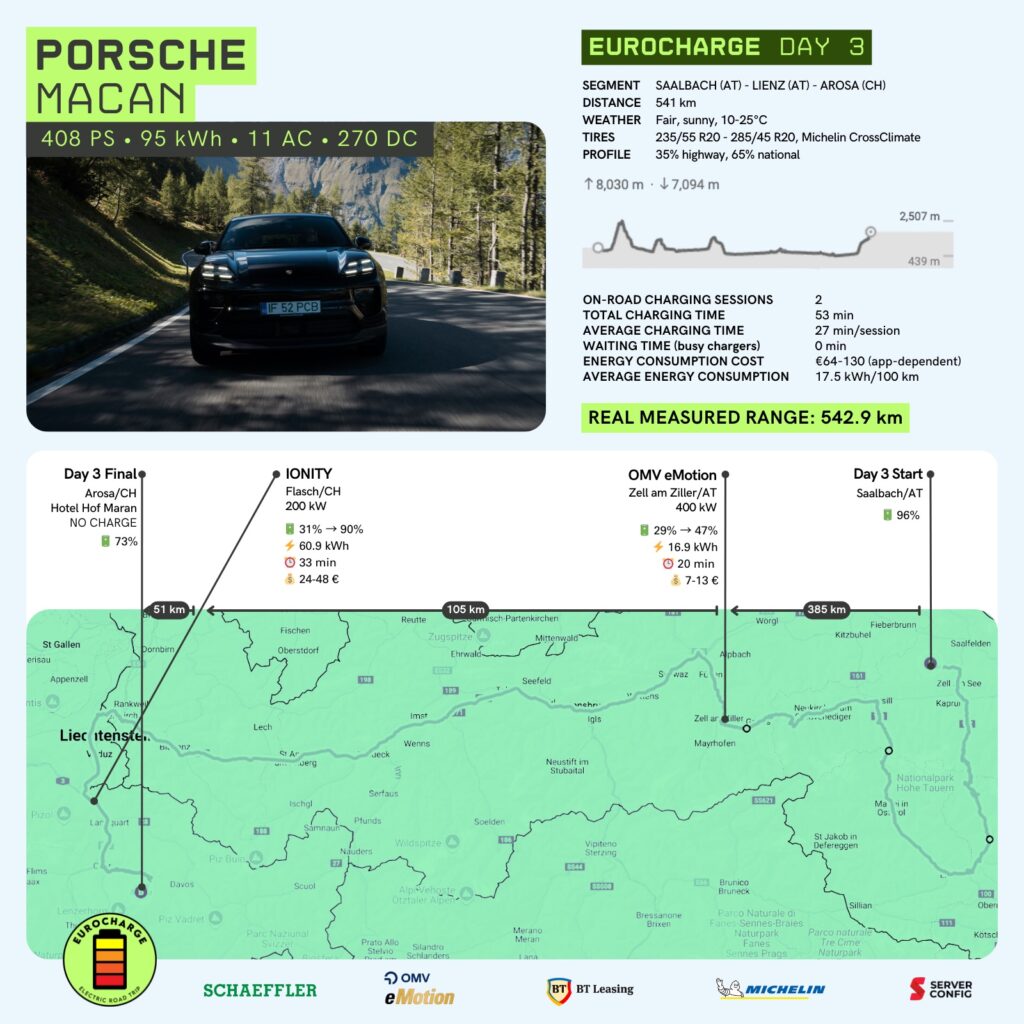
Constantin Ciobanu (Autocritica, Adevărul Auto) on the Renault 4 E-Tech Electric
As soon as you take the highway off the menu, the Renault 4 shines. On the highway it’s limited in its expression given the 52 kWh of usable battery capacity, but in terms of efficiency it’s on a par with the rest of the pack. Did I say it shines? Well, the first part of today’s drive over the Grossglockner Pass resulted in an average fuel consumption of 13.8 kWh/100 km driven. Yes, the Renault 4 is trained to perform urban and at speeds up to 90 km/h. In this range it is one of the most efficient models.
I welcome the fact that you can choose between four regenerative braking gears, the last gear (the most aggressive – it’s the ‘one pedal’ mode). On a mountain pass it becomes a very exciting game to use the regenerative braking gears combined with anticipation to combine a smooth driving style with maximum efficiency.
But perhaps most of all I like the fact that the Renault 4 is a normal car. Renault has given it a memorable exterior design, but it hasn’t turned the car into some kind of jewel with a prohibitively expensive price tag attached. It’s a chic, everyday car that drives sensationally pleasant on twisty roads.
Dragoș Băltățeanu (Autocritica, Auto Test) on the Renault 4 E-Tech Electric
The Renault 4 is one of the most successful electric models produced by the French manufacturer in recent times. In addition to its retro design that evokes the classic R4, the new model is a pleasure to drive on any type of road. What’s more, it’s ideal in the city, more comfortable and more practical than its Renault 5 sibling.
You can adjust the amount of energy it recovers through deceleration with the two paddle pads on the steering wheel, or turn it into a ‘one pedal car’ that’s very easy to control with just the accelerator pedal. And it handles twisty roads incredibly well!
I like the way it looks, Renault designers have managed to make a very modern interpretation of the classic R4. I’m not a fan of retro design, but in the case of the new Renault 4 and Renault 5, the design is more than successful.
But the most impressive thing is how efficiently it manages its 52 kWh battery. The consumption figures are excellent whether you’re driving on the highway or a national road. After the day we left Austria via three mountain passes, we covered a total of 532 kilometers with a consumption value of 14.8 kWh/100 km.

Marco Badea (Explicativ.com) on the Volkswagen ID.4
It was love at first sight between me and the Volkswagen ID.4 Pro, just like in the movies. I admired it discreetly on the first two days of the tour, and on the third, when I got behind the wheel, it greeted me with the elegance of a well-built electric car.
The Volkswagen ID.4 Pro is extremely smooth on the road and you don’t feel it shake you hard even on the bumpiest bumps in the road, a sign that the suspension is on the right track.
Everything inside is designed to make your driving experience (and beyond) as efficient and enjoyable as possible.
The navigation screen is positioned so that you don’t feel like it’s obscuring the windshield, and it’s also angled slightly towards the driver so you can get a very good view with just your eyes. Plus, it’s positioned at the optimal distance so you don’t accidentally touch it if you hit the gear lever. Behind the wheel, you feel like you’re in a real SUV, as the car feels both sturdy and nimble on the road at the same time.
It’s spacious, the separate armrests on the front seats help you drive very relaxed, and the whole dashboard construction is neither garish nor shabby, lacking in personality. It’s a tasteful minimalism that draws you in.
The exterior exudes strength. It’s like one of those quality jackets that you put on both because it gives you confidence through its beauty, but also because it keeps you warm in cold temperatures.
The Volkswagen ID.4 Pro has personality, and every touch of the accelerator or brake is so well thought out that you feel at one with the car. German fusion.
As for energy consumption, what can I say: range is great. It’s an extremely good car for the city and excellent on long trips. I have driven it for 200 km, mostly on the Grossglockner Hochalpenstrasse, and I have seen how well the fuel consumption adapts to the road conditions.
This car is not rigid in any way. And when you see it on the road, if you haven’t driven it yet, you’ll feel it wink at you.
Mircea Meșter (Autocritica) on the Volkswagen ID.4
The Volkswagen ID.4 has always been the well-behaved choice among compact electric family cars. The ultimate family car that doesn’t upset anyone in the neighborhood, but doesn’t give you butterflies in your stomach either. Proper food, no chili peppers. A sensible choice.
Except, in the meantime, ID.4 has been hitting the gym. It’s been secretly working out and, while it looks the same (unless you have a trained eye for minor details), under the bodywork it’s transformed from a family man into an athlete. It’s a facelift of sorts, but not with chrome bling, but with muscle and brains. The engine on the Pro version, the one on our tour, has jumped from 204 to 286 horsepower, and torque has exploded to 545 Nm. That means the sprint to 100 km/h dropped to 6.7 seconds and top speed climbed to 180 km/h. Charging got a serious boost too, rising to 175 kW, which means you spend less time at the plug and more on the road. And on the inside, the Germans listened and put in a bigger 12.9-inch center screen, moved the gear selector to the steering column, freeing up space.
I got to see and feel him at work on the most complex day so far of our electric tour: a trio of Austrian Alpine passes – Grossglockner, Felbertauern and Gerlos.
The result is excellent. After 230 kilometers of ups and downs on the three passes, the car was ridiculously efficient: 13.3 kWh/100 km. At a posted average speed of 48 km/h, I had 54% left in the battery. To put it in Romanian, I could have taken the whole route in reverse and still had some electricity left for a one-way trip to the village grocery store. Impressive.
The highway to Switzerland followed, with 120 km/h limits. Fuel consumption went up, naturally, but stabilized at a very good 14.7 kWh/100 km after 400 km. And finally the desert: the 25 km climb from Chur in Switzerland to Arosa.
I would like to use this text to talk a bit about the German engineers’ fetish: touch buttons. My relationship with them has evolved. For the first hour, I hated them. In the second, I began to understand their logic. By the end of the day, my finger was sliding the volume slider under the screen like I was Richard Clayderman at the piano. It became my favorite gesture, the way I controlled the most used system on board: the audio.
Now for the most important part. We charged twice today: once for 15 minutes and once for 40. But the truth is that the second stop was out of empathy, to leave the hotel stations overnight for colleagues who needed them – you know, when you organize this dementia, you sacrifice for the good of the community. But it’s certain that if I’d been alone or with my folks, this whole hellish day of three alpine passes and an aggressive climb would have been done in a single 15-minute charge. That’s it.
The ID.4 remains an all-rounder which, after this technological facelift, has become excellent. An extremely serious family car that’s left with very few minuses. It’s arguably one of the smartest and most honest options you have in its price range.
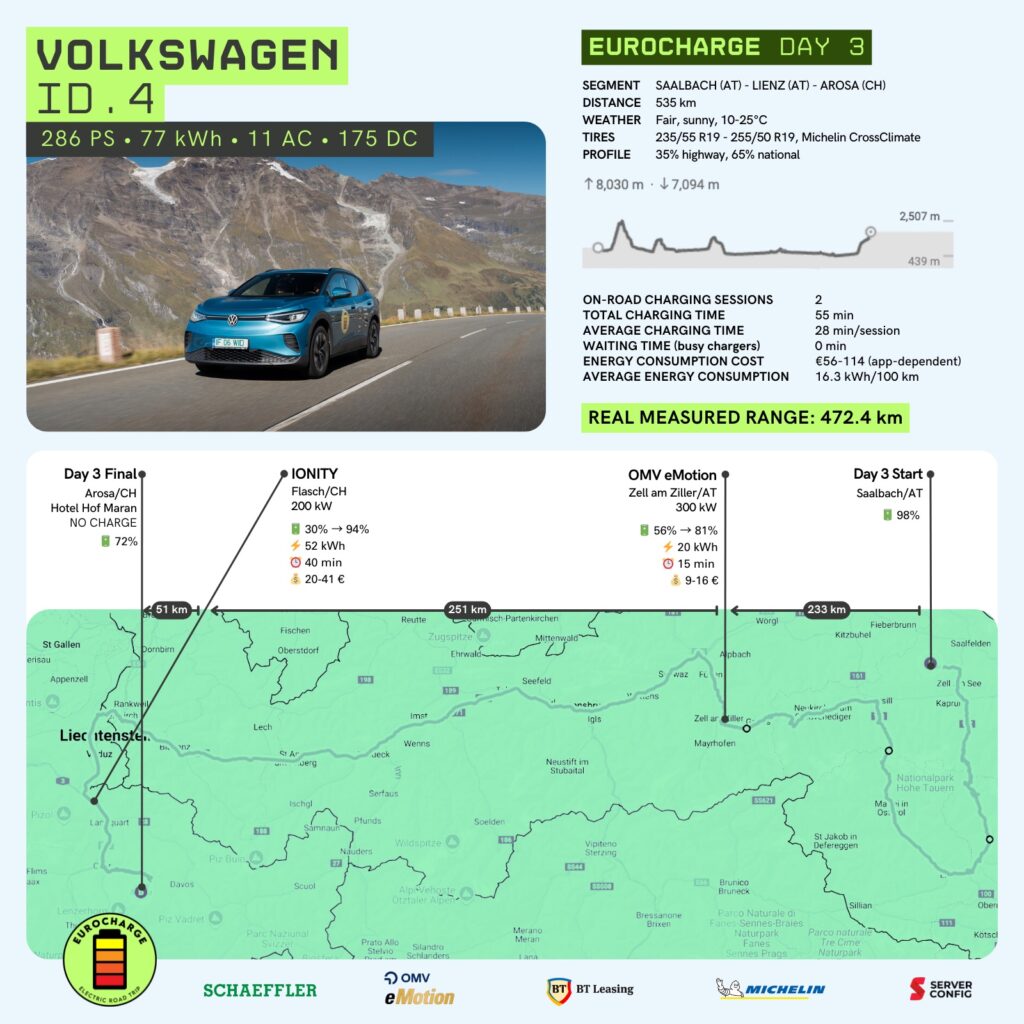
Radu Hângănuț (Euronews Romania) on the Volvo EX90
If Volvo EX90 were your classmate, he’d be that tall student with banker parents who moved a year ago from a Nordic country, an Olympian in all the exact sciences, and who you don’t even have the guts to ask if he’s taking French, because it’s clear to you that he doesn’t know the concept of compromise from principles.
The EX90 comes to us with the same classic Volvo elements that have become almost pop-culture over time, but demonstrated on every meter of asphalt where the cars in this family run with the confidence that a dolphin can move through water, regardless of the relief and depth. “Since 1959” emblazoned on the seatbelt buckle is the ultimate statement from a brand that essentially invented road safety as we know it today, gave it to the world to consume (and then ignore when the world got its head around it) and now parades it around. When you can afford to write that, you’ve clearly put more airbags and safety systems in your car than most of our city hospitals have.
It doesn’t get lost on the corners and doesn’t leave you with any backward impressions. It shouldn’t. That’s why it’s a Volvo. Instead, you get the best out of its mammoth dimensions: a large boot in standard form (689 liters with seats 6 and 7 in their sleeper positions), huge if you fold down the seat (2,135 liters) and still decent if you want to take the family and the neighbors’ twins on vacation (324 liters).
I was also pleasantly surprised by the consumption. You’d think it’d have a big battery, so it’s got plenty of room to go. It does. But it’s also 3 tons when you launch it on the road with people and luggage. Still, on a day of consecutive climbs to 2,500 m, descents and highway, the consumption stayed close to the official zone: around 22 kWh/100 km.
But we wouldn’t appreciate the good things if there weren’t some to sneer at. The minimalism Volvo had accustomed us to, and the way it hid technology so that it served rather than blinded, seems, with the EX90 and its siblings, to remain specific to previous generations. In the EX90, everything happens on-screen. But everything. Maybe too everything. It’s one thing to adjust the temperature from a menu, quite another to turn on the lights, adjust the steering wheel and open the glovebox by accessing pages and selecting check marks next to the buttons.
Marco Badea (Explicativ.com) on the Volvo EX90
You know that guy who always goes out in a shirt, has an athletic silhouette, is dressed smart casual and you turn your head because he has attitude? You know that woman dressed in a fine silk dress, tight on the body, with high heeled shoes and curls in the wind, that all the men turn their heads after?
This is the Volvo EX90. This car has a special attitude on the road, it stands out with elegance and it empowers you when you drive it. You can’t get too worked up behind the wheel of this car, because driving the Volvo EX90 is like a therapy session. You can collect your thoughts, you feel protected by the car, and the comfort is of the highest standard I’ve ever experienced in a car.
In other words, the Volvo EX90 is like a teacher who teaches you how to ride gallantly on public roads. You don’t need to impress anyone with anything, stomp on the accelerator or jerk the car around corners for the adrenaline rush. The Volvo EX90 isn’t a car that makes you want that. You’ll want to feel it when you drive it. And there’s plenty to feel.
I kind of abused the in-seat massage while driving from Austria to Switzerland. I’ve tried several programs, as he has several, and this option is not just a luxury as some might think, it’s specifically designed to invigorate you on the go on long drives.
What’s more, the car has a highly intelligent adaptive cruise control system that’s so smooth you don’t even feel it. It adapts itself to the road, it adjusts itself to the speed readouts on the turn signals, and it doesn’t jerk you off when you take complete control. It’s all silent. It’s the quietest car I’ve ever been in.
What’s more, the one pedal drive system is extremely efficient. There’s simply no need to use the brakes, because the Volvo EX90 brakes as soon as you take your foot off the accelerator (if you’ve activated the system).
I said about this car that it’s like a teacher mainly because it makes you drive on the road in a regular way and feel really good about it, without having to panic that someone is tailgating you, someone is honking at you or someone is in a hurry and overtaking you on the right.
This car disciplines you by the way it makes you feel behind the wheel. It makes you feel valued and that you belong to a higher standard. And that feeling beats any form of Meltevan adrenaline rush when you’re outraged that Europe’s roads are driven by following the rules, not breaking them.
This car also has such a fine music system that even if you turn the volume all the way up, you can hear yourself and the other passengers without screaming. Just possibly raise your voice a little louder. It’s so clearly thought out that you feel like you’re in an expensive car.
And as we entered Switzerland, we listened to Ana Coman’s “Contratimp” and it was a perfect fit, because this car has something of the metaphor of the song and doesn’t let you take chaotic steps in traffic. It sets a calculated pace. In other words, the Volvo EX90’s time trial would be any deviation from the rules, which this car teaches you to correct.
As for range, it’s a perfect electric car, I’d say. I charged it once and drove 536 km with my colleague Adi Mitrea. The average consumption was 20 kWh/100 km and at the end of the day we had a range of 535 km.
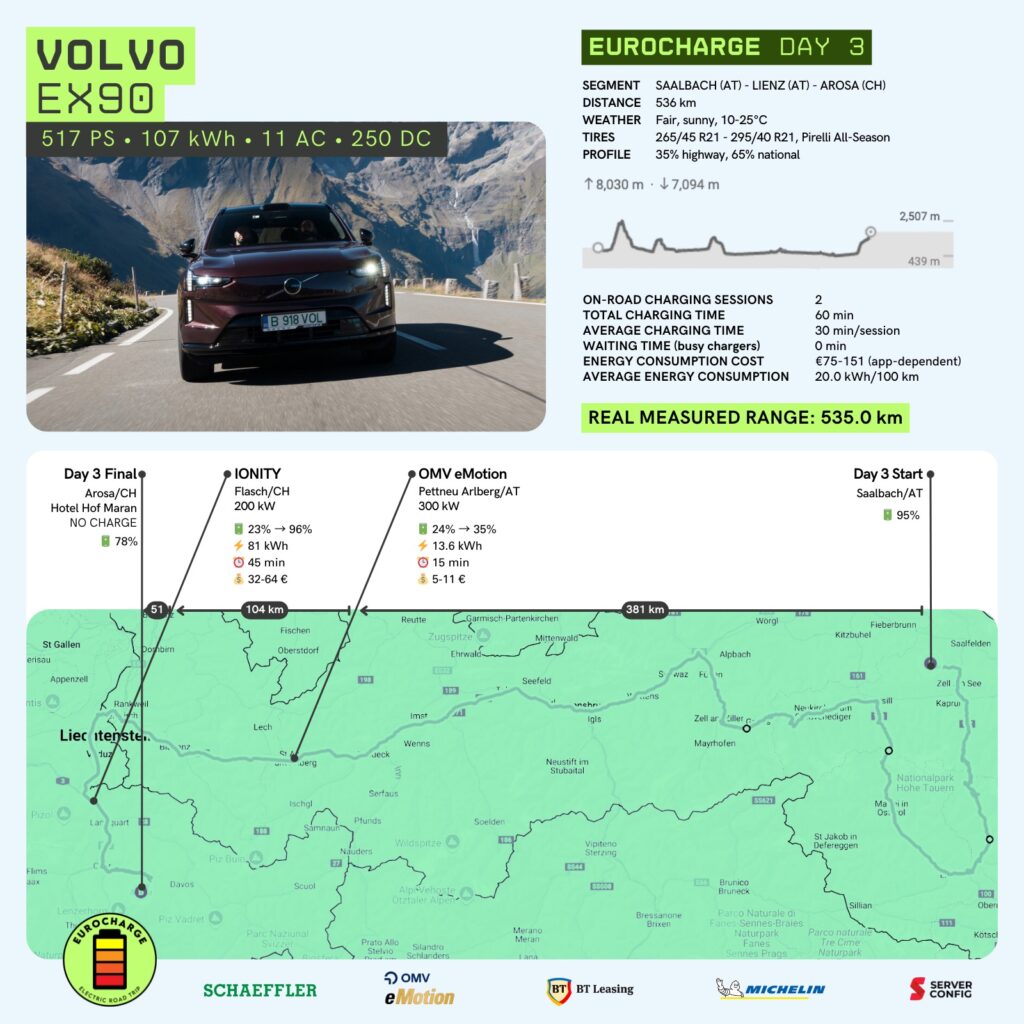
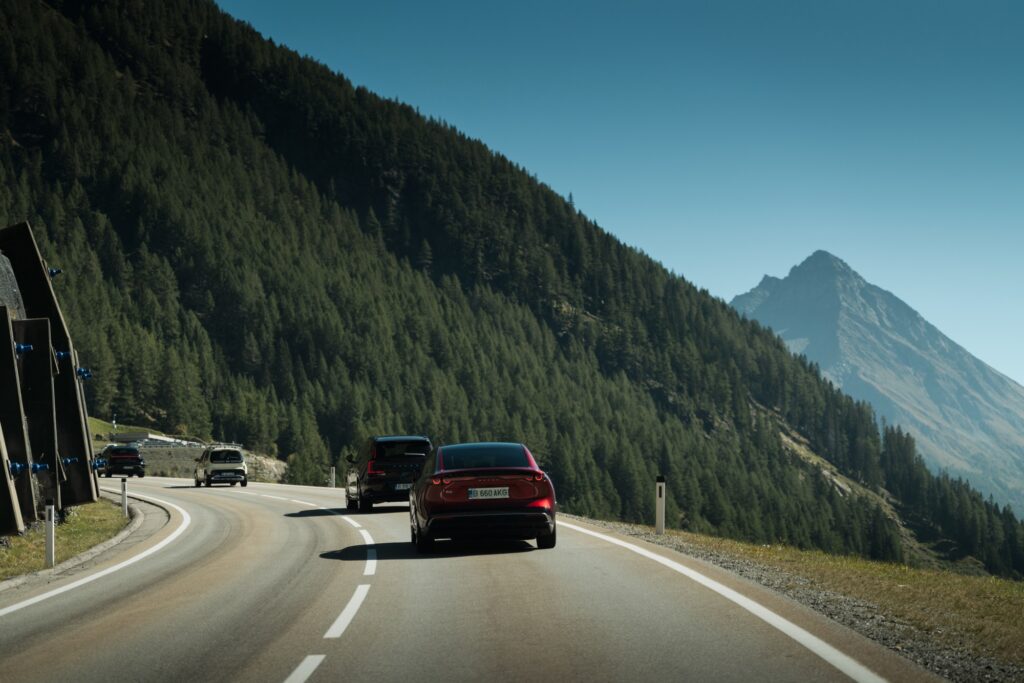
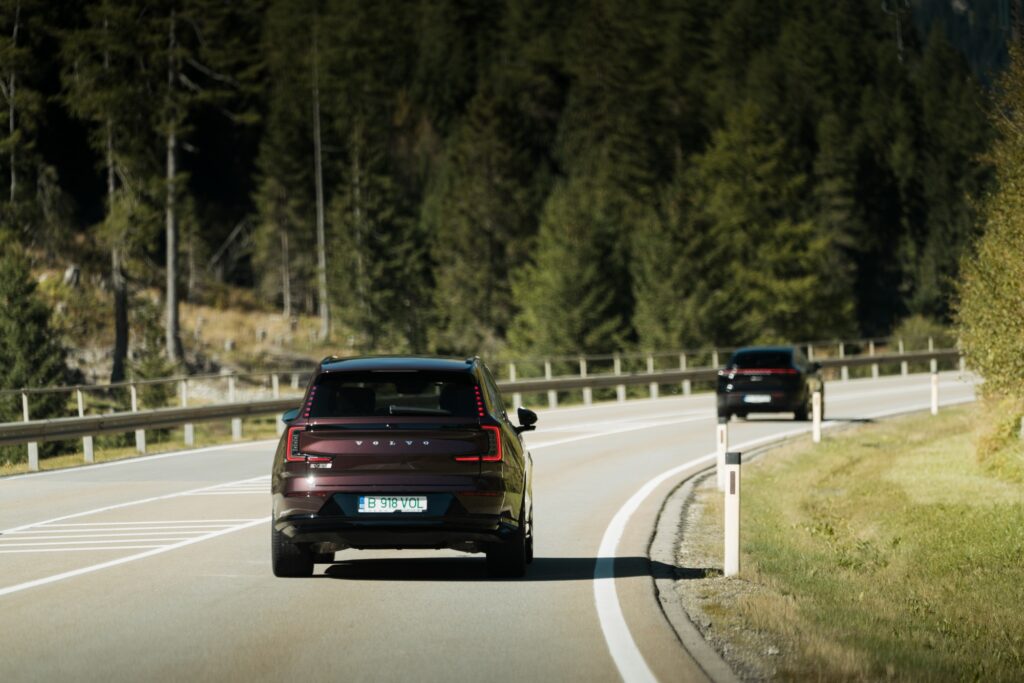
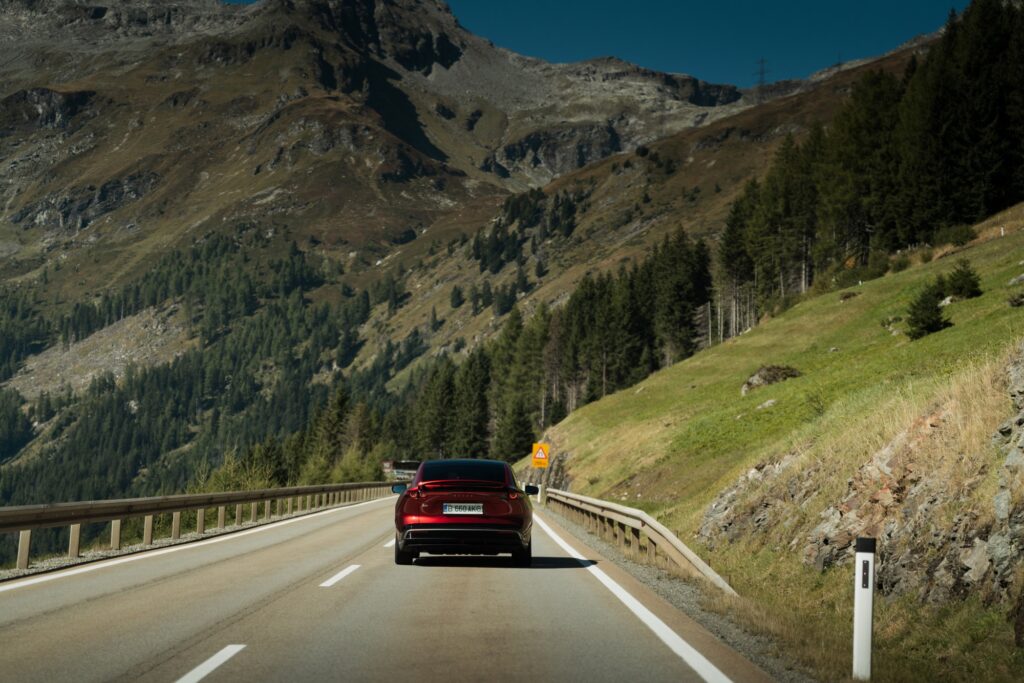
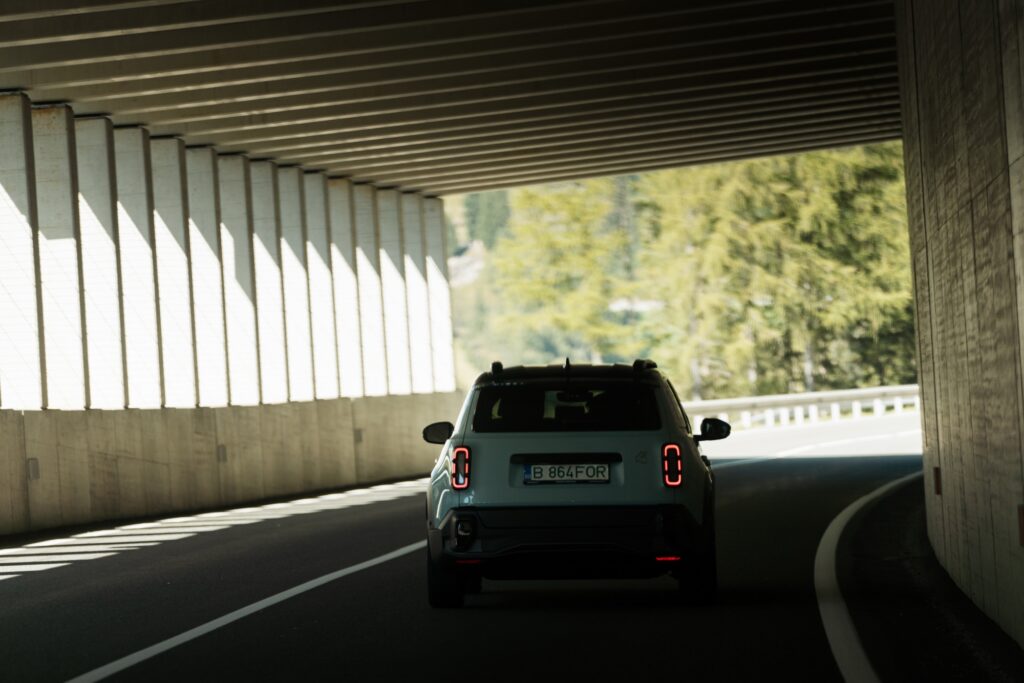
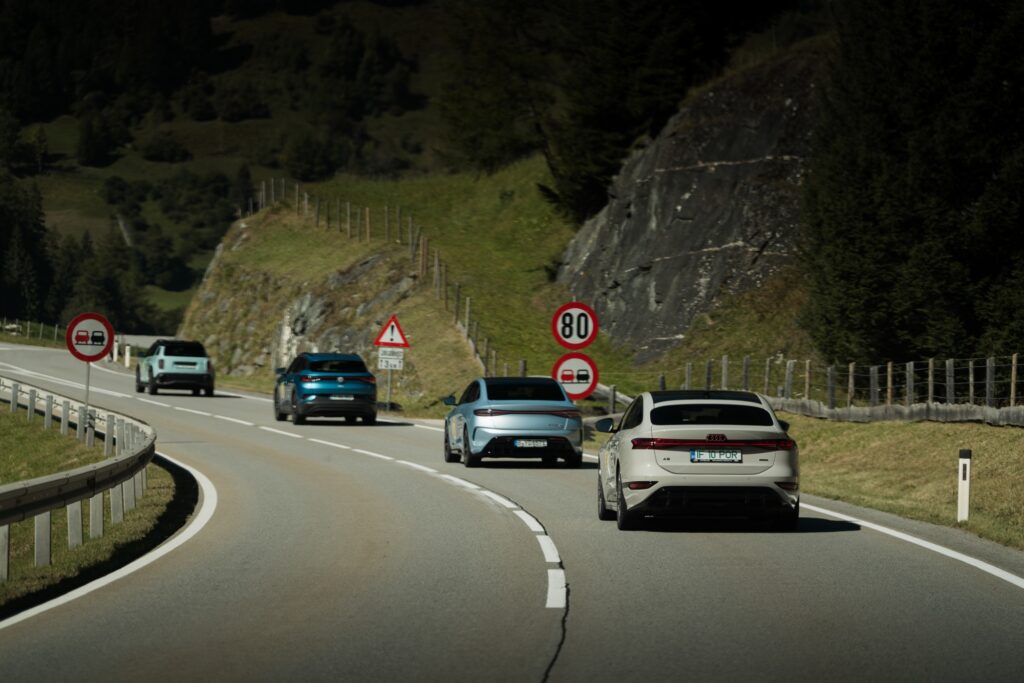
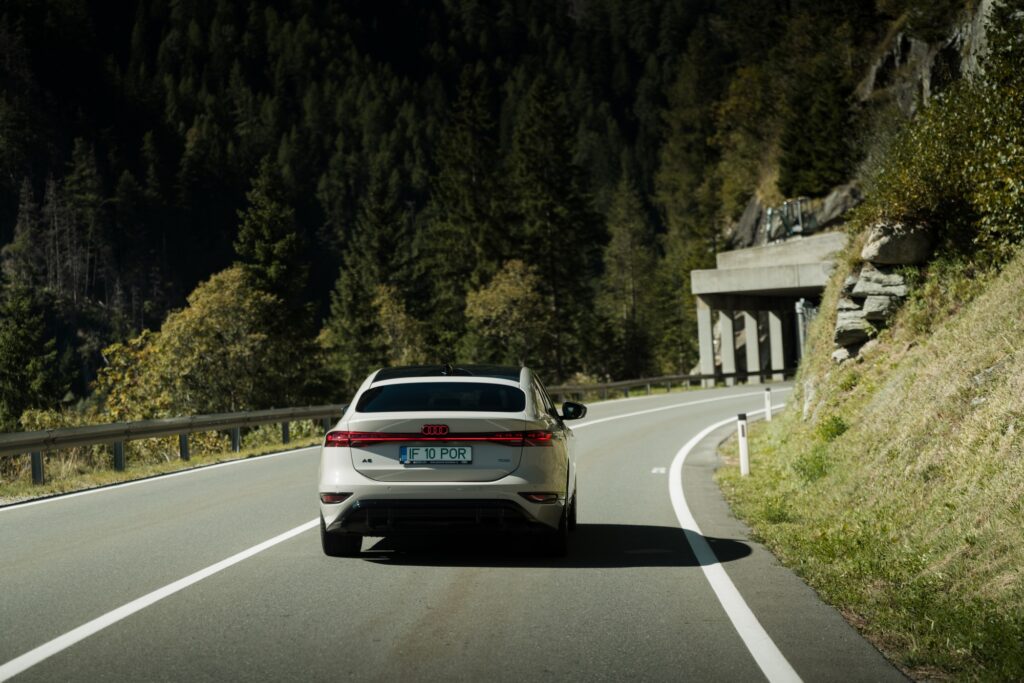
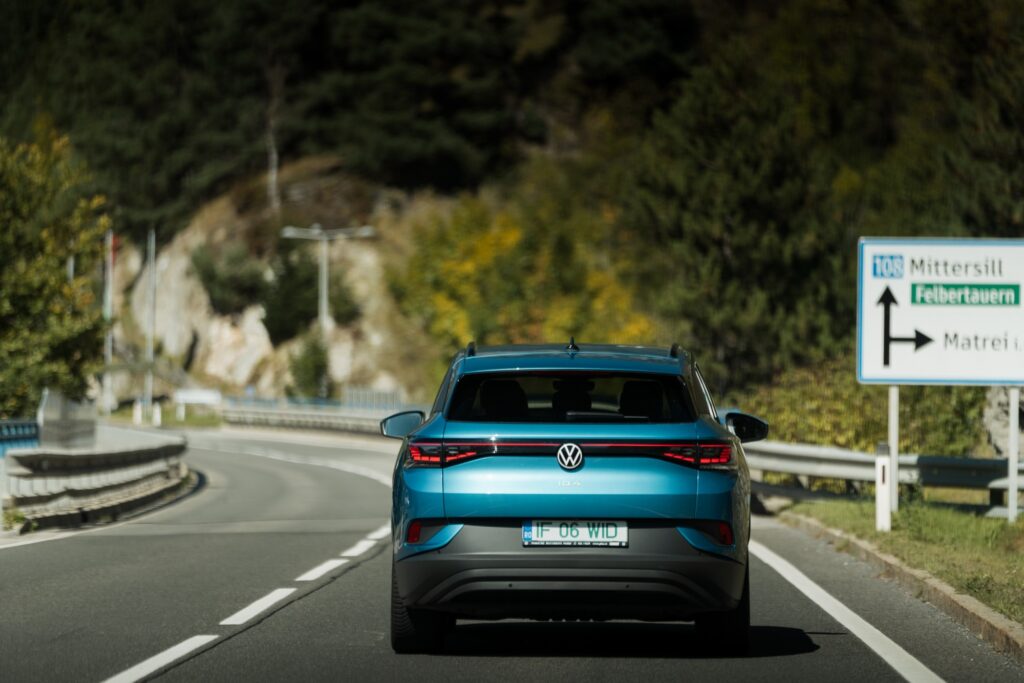
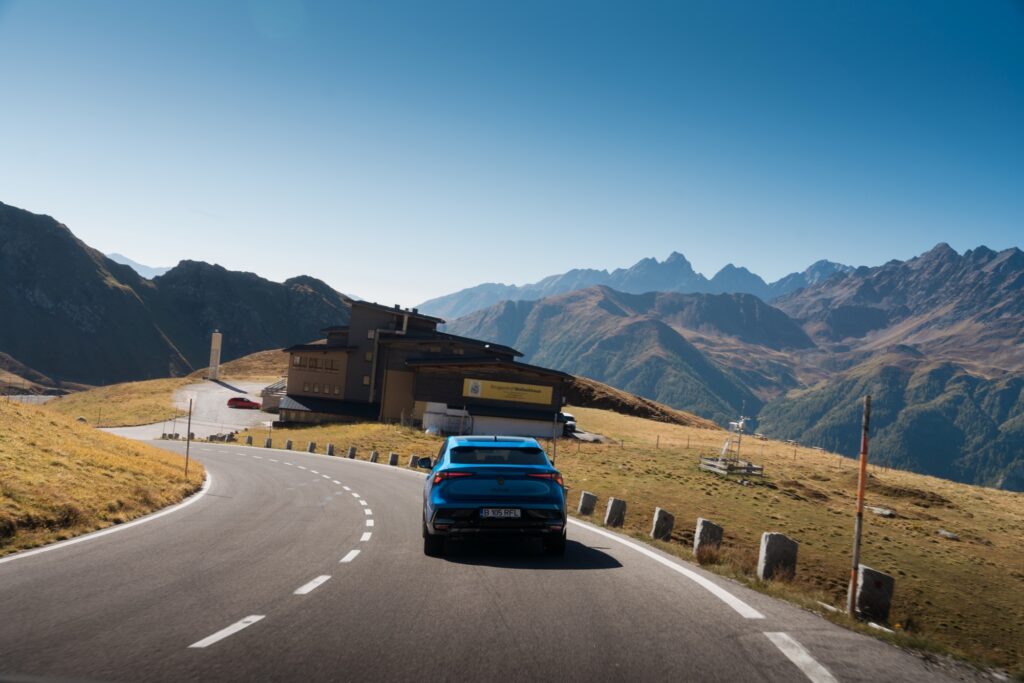
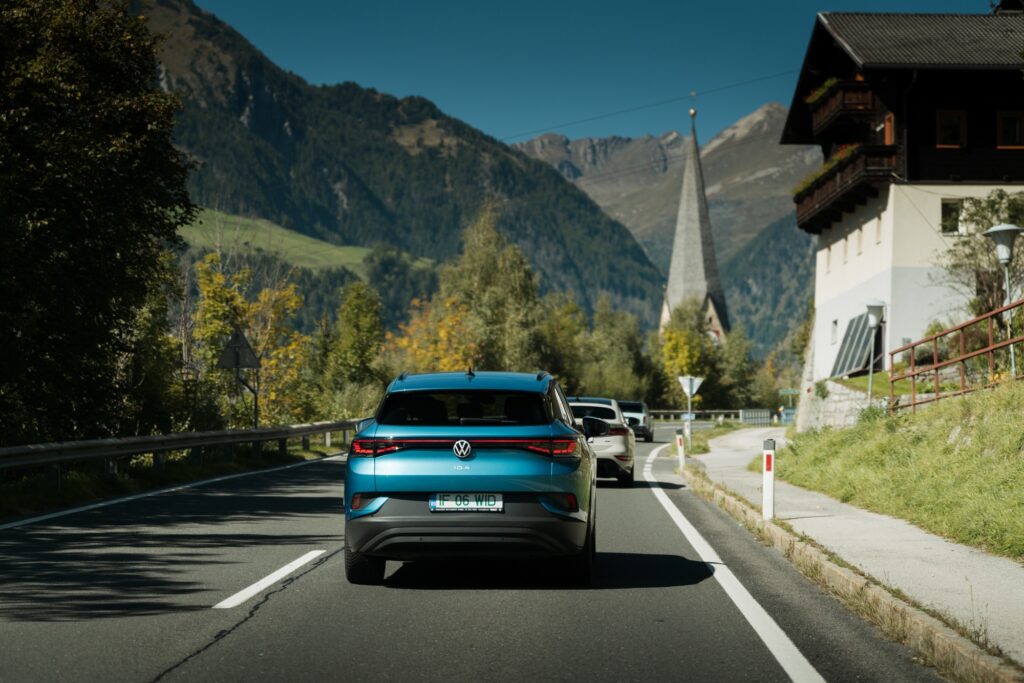
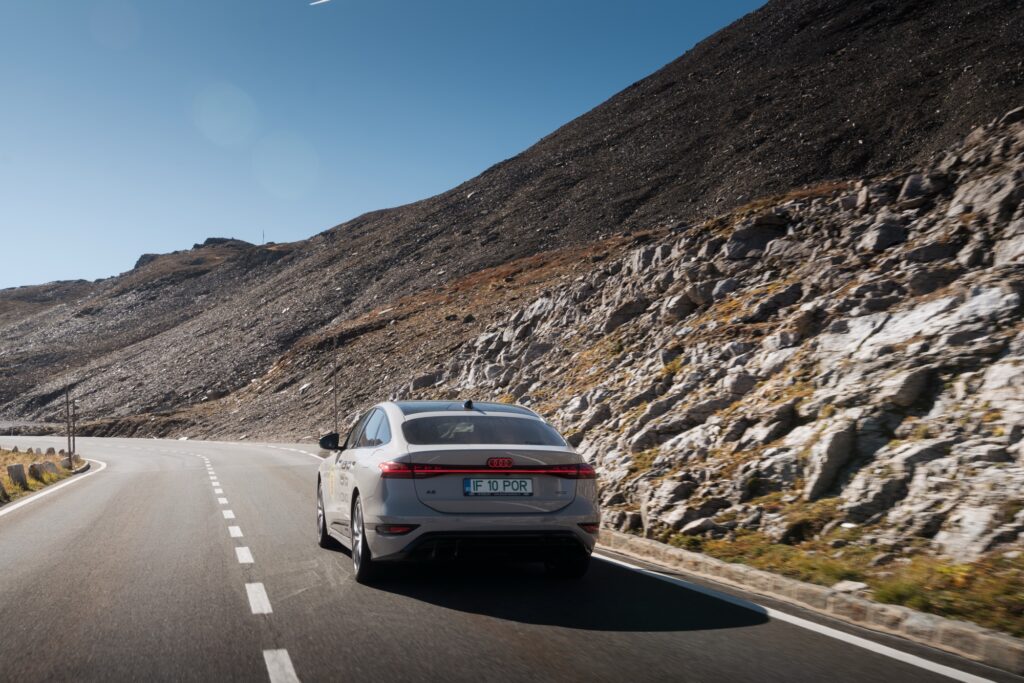
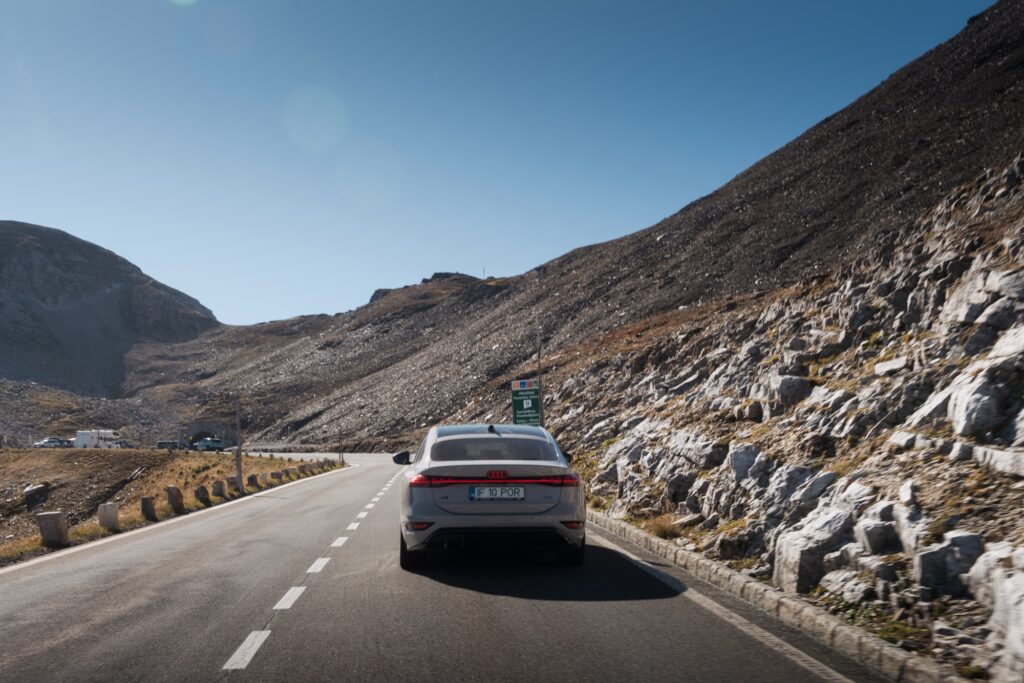
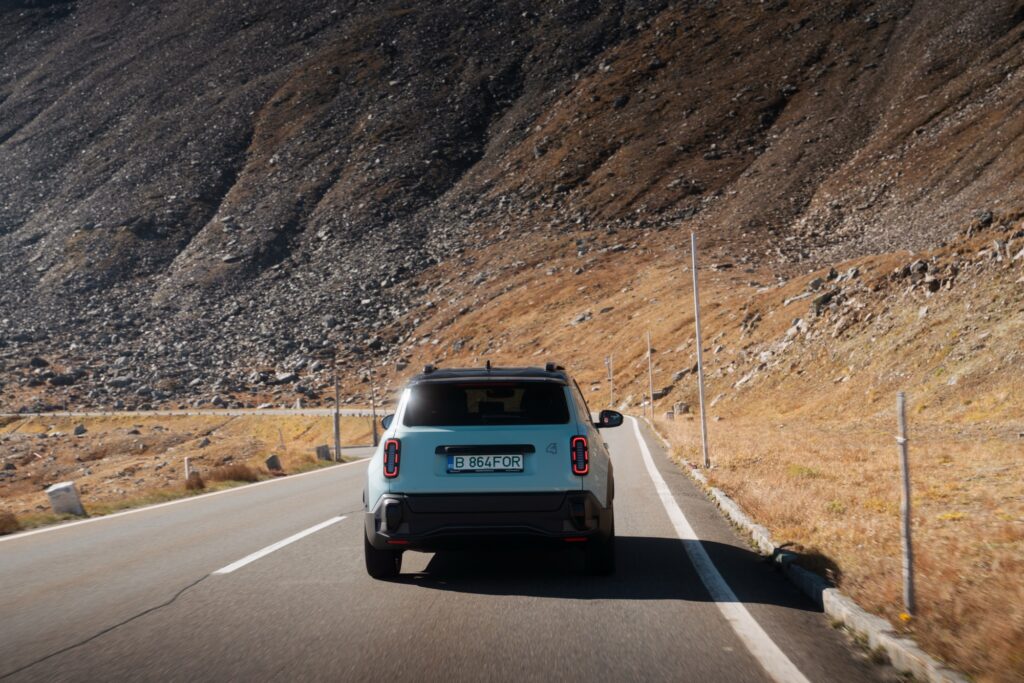
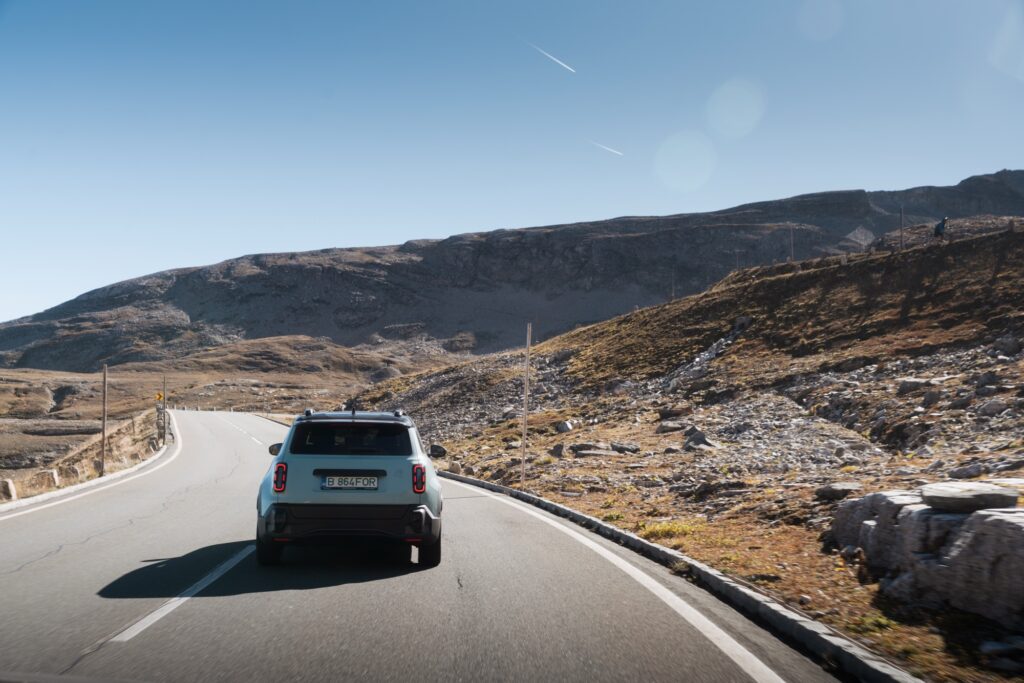
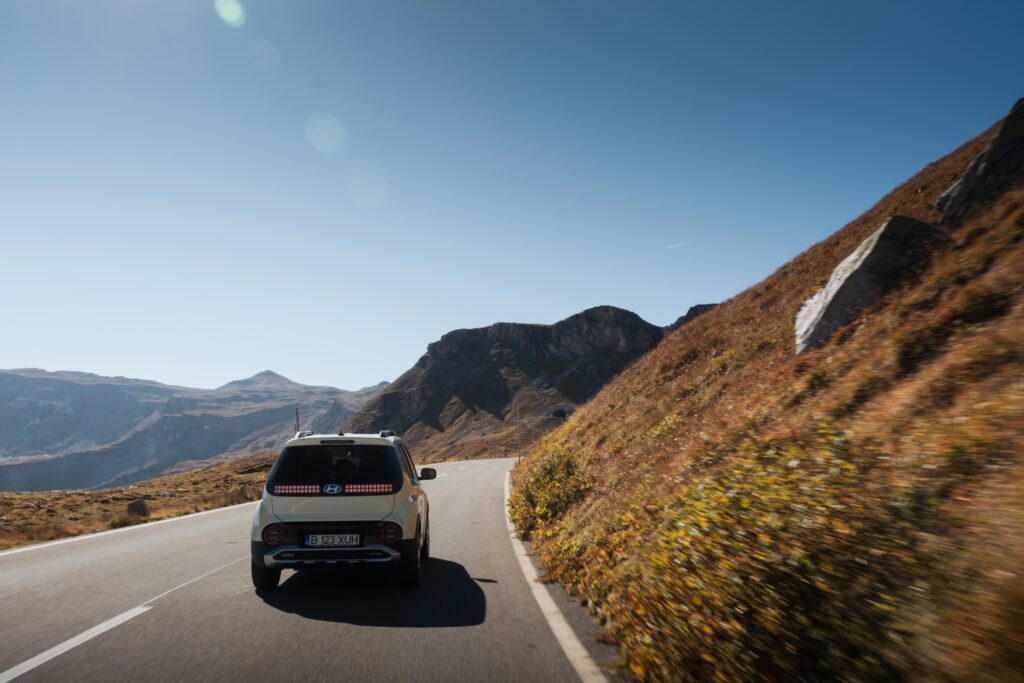
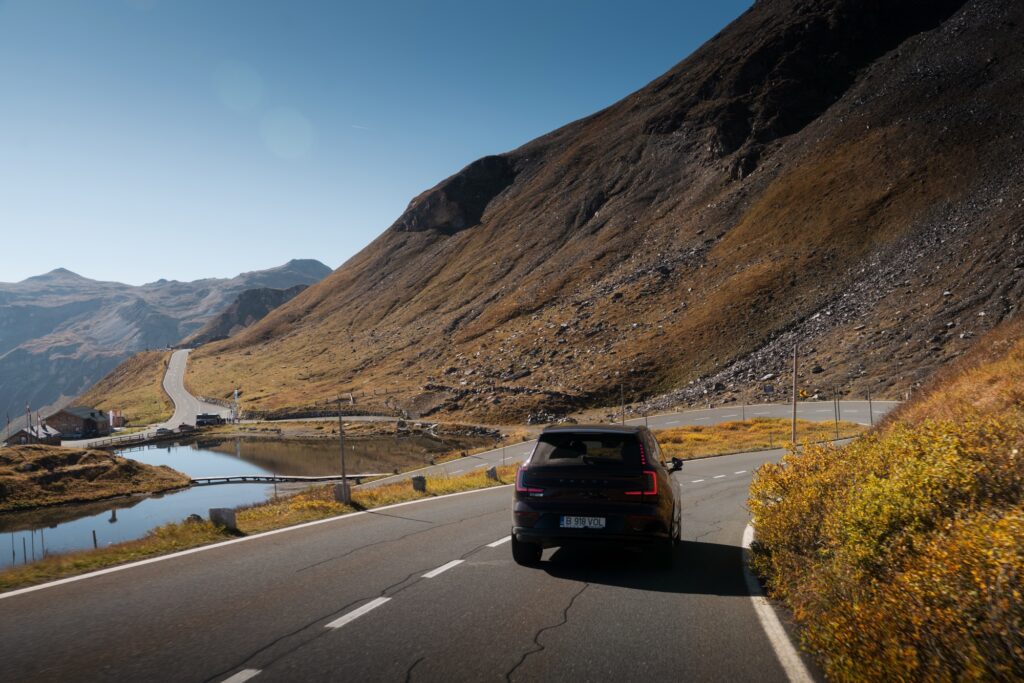
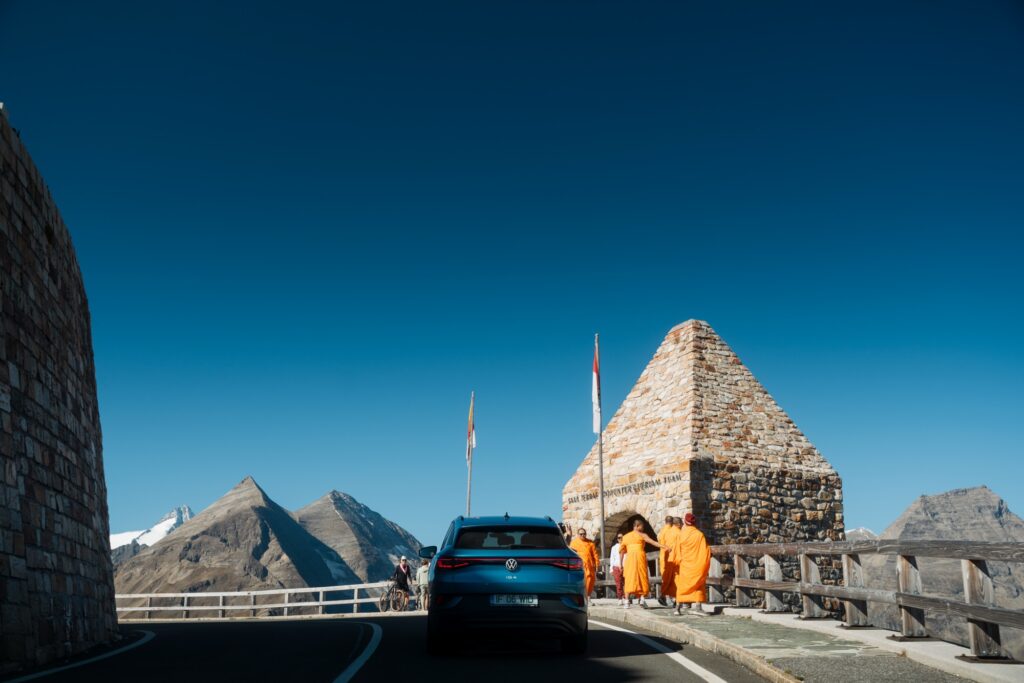
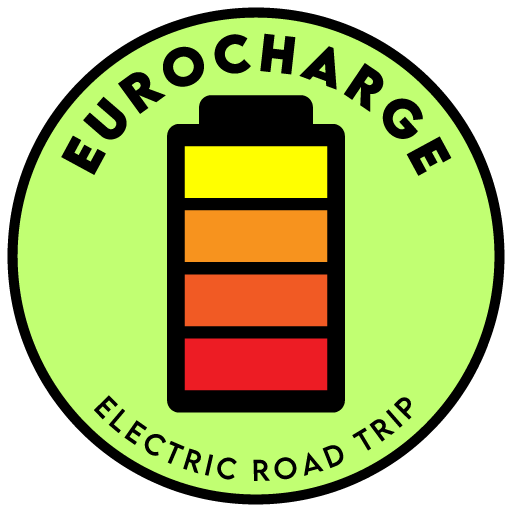
este un proiect susținut de SCHAEFFLER
Încărcat de
OMV eMotion
Green Partner
BT Leasing
Pus pe șosea de
Michelin
Tehnologizat de
Server Config



